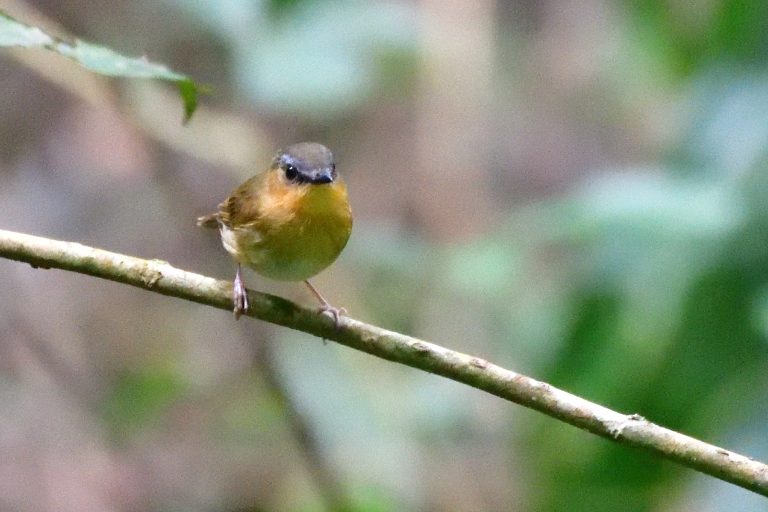
I had the pleasure of hosting Rob Little and his partner Karen Kearns for 2 weeks. Rob, a retired Professor from the Fitzpatrick institute of Ornithology at the University of Cape Town and I had planned this trip for a long time. However; Covid had put a hold to previous attempts of him getting here. Rob had been to Tanzania, Uganda and Kenya before, but he still had quite a big target list. The job for Abdul and me was of course to find as many as possible of those birds for him. Rob recently published a book “Game Birds of Africa. He had a signed copy for me as a welcome gift. Rob is not a bird photographer, so I had not too much time to take pictures on this trip. The quality of some of the images is therefore not up to normal standard.
Day 1, Saturday, September 25 – Pick up at airport and birding on Kiligolf
Rob and Karen flew in on the Ethiopian flight direct from Addis Ababa landing in the early afternoon. This gave us time for an afternoon birdwalk on Kiligolf. We started at 16:00 for a couple of hours walk. We recorded about 50 species where 8 was lifers for Rob: Vitelline Masked Weaver (my garden), Northern Brownbul, Purple Grenadier, African Grey Flycatcher, Brown-breasted Barbet, Pale White-eye, Bare-eyed Thrush and after we came home Yellow-spotted Bush-Sparrow (Petronia) in my garden. Rob had only had fleeting views of the Grant´s Francolin before and he was delighted to see them coming to my bird feeder. He had a target list so we could probably find a few more birds, but those were his targets for Kiligolf and we cleaned them out. All in all a good afternoon walk.
Some birds from my garden
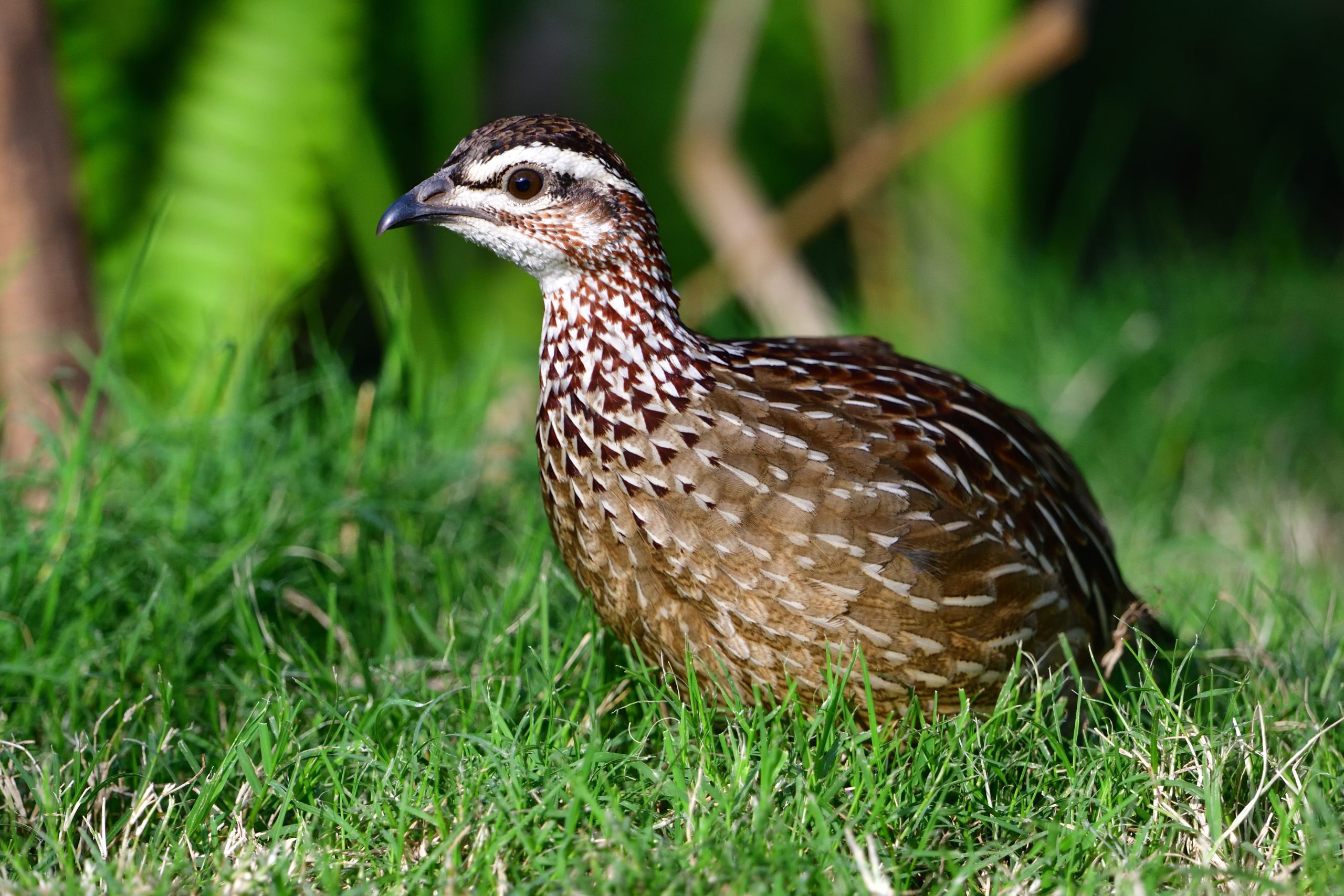
Grant´s (Crested) Francolin, Ortygornis grantii – Picture from my archives
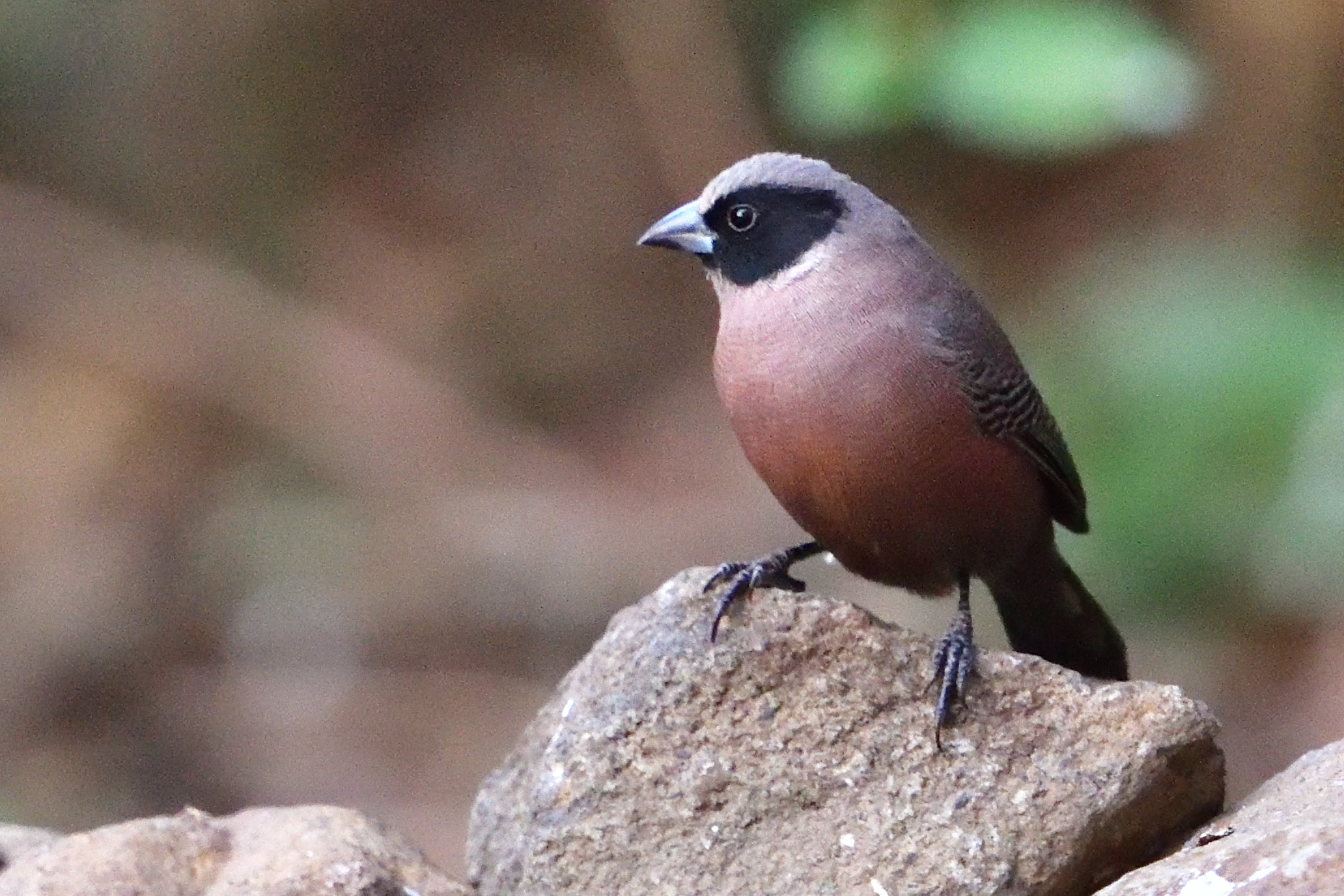
Black-faced Waxbill, Estrilda erythronotus
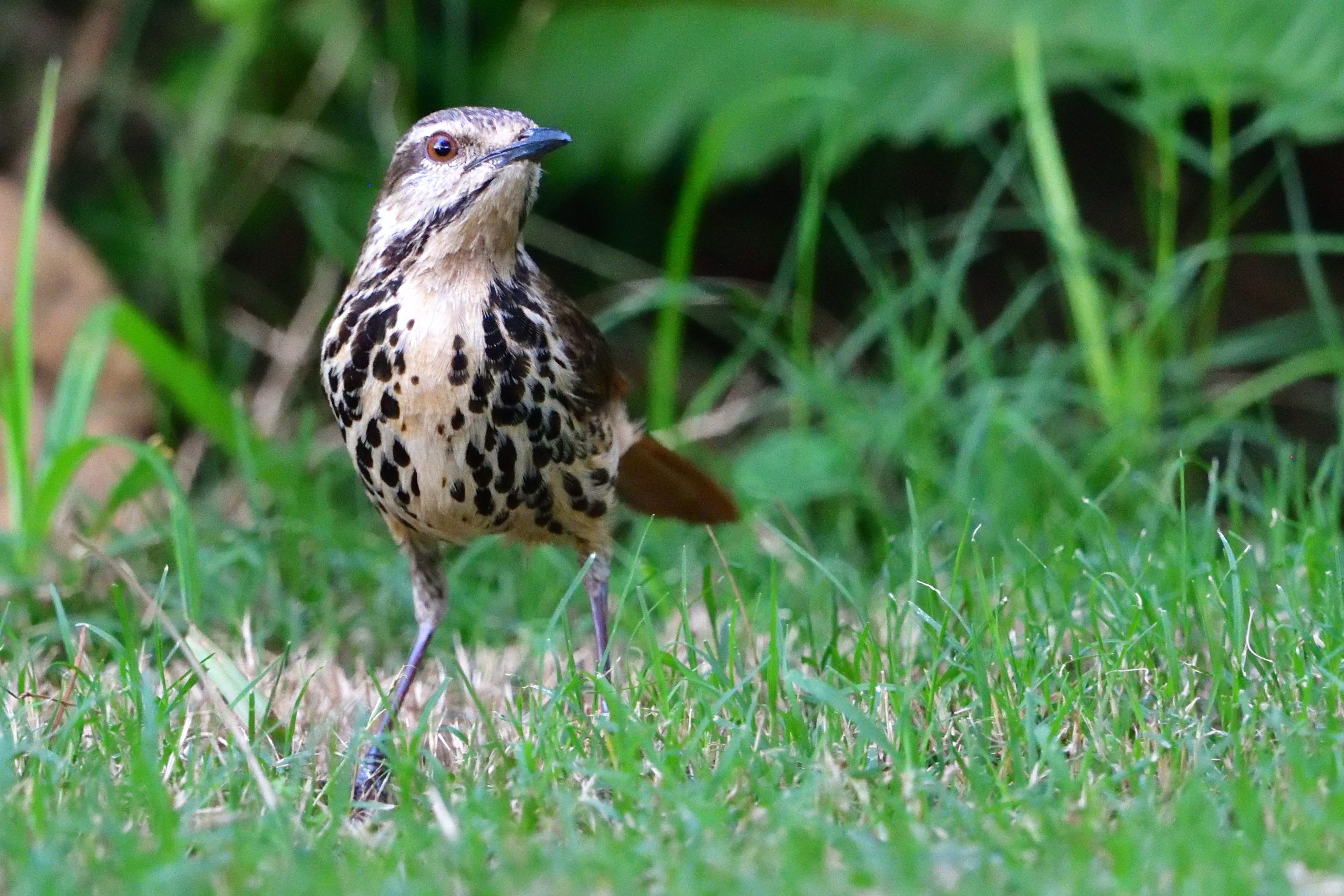
Spotted Palm Thrush, Cichladusa guttata, Endemic to NE Africa
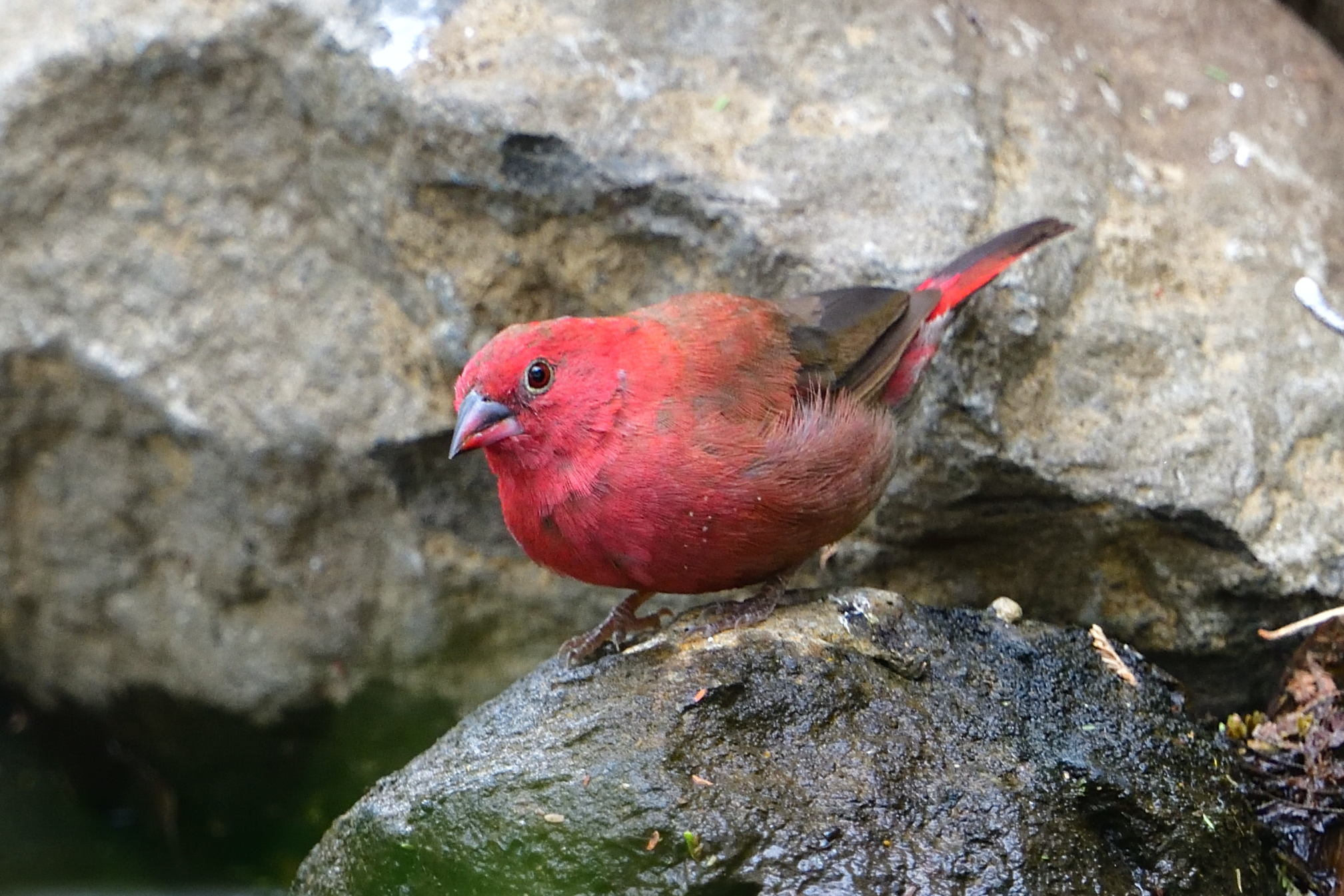
Red-billed Firefinch, Lagonosticta senegala
Day 2, Sunday, September 26 – My house – Lark Plains- Oldonyo Sambo – Lake Duluti
We had an early start and arrived at the Lark Plains at around 07:30. On the way to the place we normally find the Beesley´s Lark, Rob picked up a few more lifers: Tiny Cisticola, Taita Fiscal, Foxy Lark, Red-fronted Prinia (Warbler) and Northern Wheatear. We drove to our normal spot, parked the car but our Masai guides where nowhere to be seen. Abdul walked off and started looking. The Masais finally arrived and took us straight to our main target: Beesley´s Lark. We returned to the car and had a quick breakfast. We packed up and drove slowly towards Saruni´s Boma (One of the Masais). Around the car we got two new lifers for Rob: Banded Parisoma and Chestnuit-bellied Sandgrouse. On the way to the Boma we got both Southern Grosbeak and White-bellied Canary. We parked the car for a small walk around the Boma and the very dry acacia forest there. We were running out of target birds, but picked up: Kenya Sparrow, Grey-capped Social Weaver, Red-fronted Barbet and Red-throated Tit. We dipped on Pygmy Batis, but had other places for that bird, so we were not too worried. We returned to the car and drove towards Oldonyo Sambo. We have a spot there for Lyne´s Cisticola, it is quite a walk and it was in the heat of the day so Rob opted to leave that one behind. Instead we compensated with a Little Rock Thrush and Fischer´s Lovebirds. We were running way ahead of schedule and returned to the car. Next destination was lake Duluti. It is quite a drive and a lot of traffic, but it is on the way home. Our first target bird here was the Grey Olive Greenbul. We tried everything, we could, but the bird did not grant us a view. We went down to the crater lake and to my horror the lake had risen even more than last time. The Taveta Weaver colony that usually nest right in front of us was gone since the reeds were under water. Abdul knew another spot on the way home. We stopped there and sure enough we had views of a male and a female Taveta Weaver. Getting closer to home I told Abdul that he should try the Grey Olive Greenbul on a certain bridge. He had no high hopes, but I know the bird hangs around there and sure enough they got excellent views. We were home around 15:00 (a new record). Dinner was at 20:00 so I suggested we take a little drive inside our estate to find the Slender-tailed Nightjar. When people land late at night with KLM, my record has been 18 of them on the road. Due to a Golf Tournament that day, there was too much traffic, but almost back at home we found a very confiding one that Abdul almost managed to touch before it flew off. The day yielded 19 lifers for Rob who was a very happy camper. Selvine served us a lovely meal and we all retired early to bed.
Some pictures from day 2:
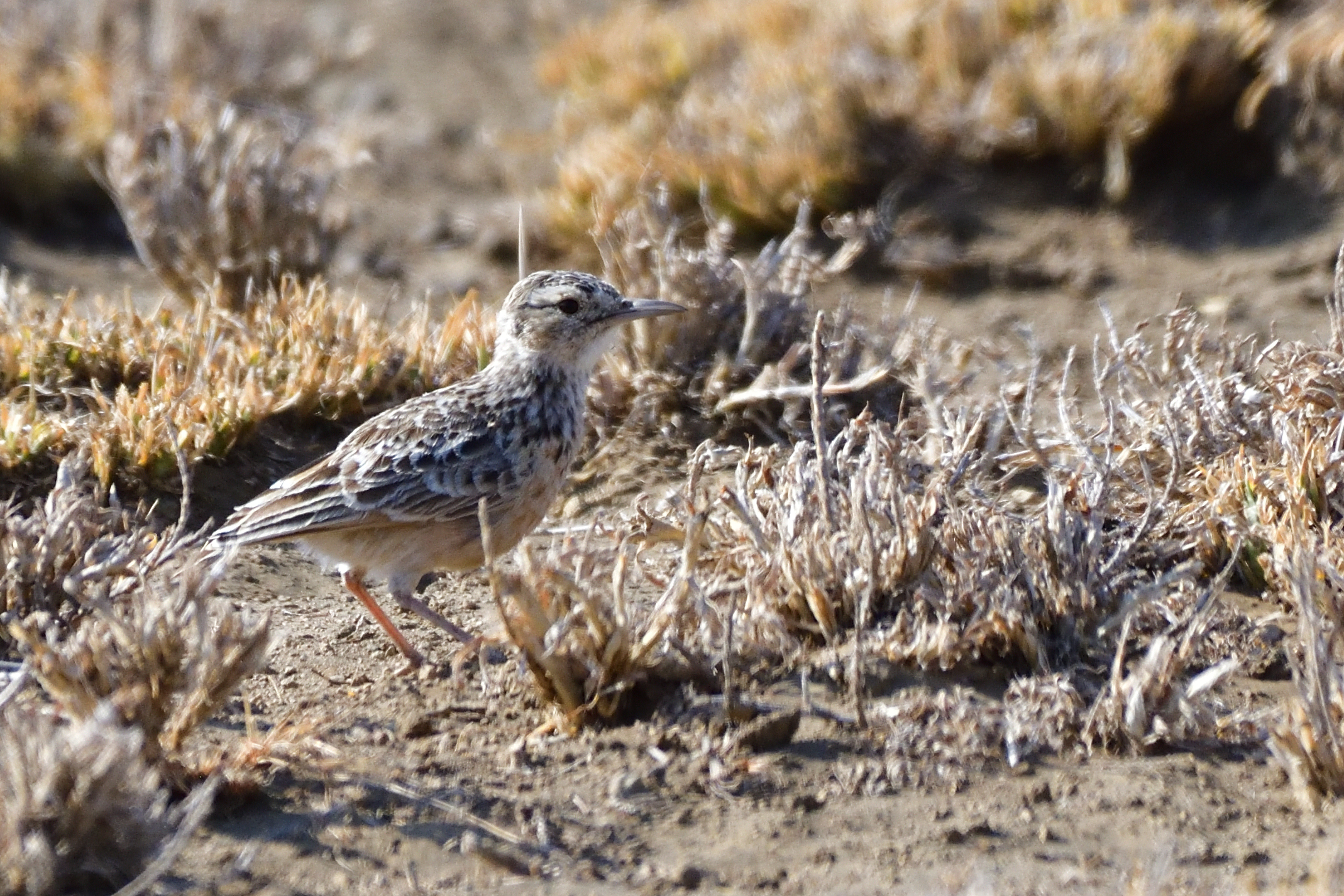
Beesley´s Lark, Chersomanes beesleyi, Endemic to a small patch north of Arusha, Tanzania
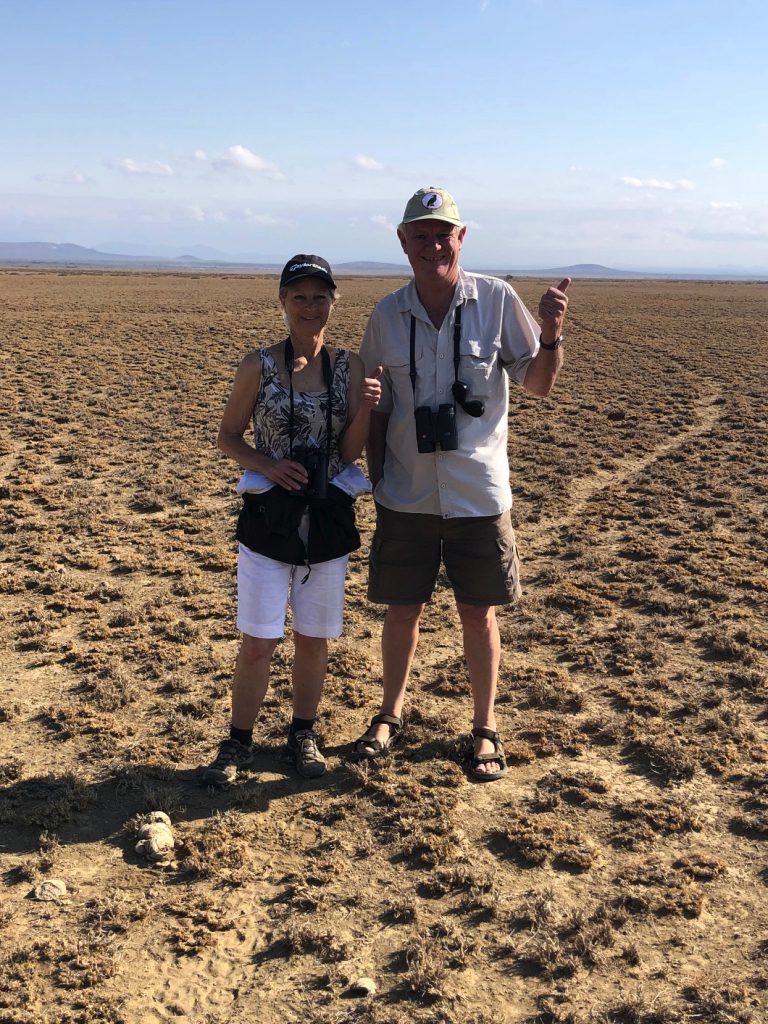
Karen and Rob celebrating good views of Beesley´s Lark
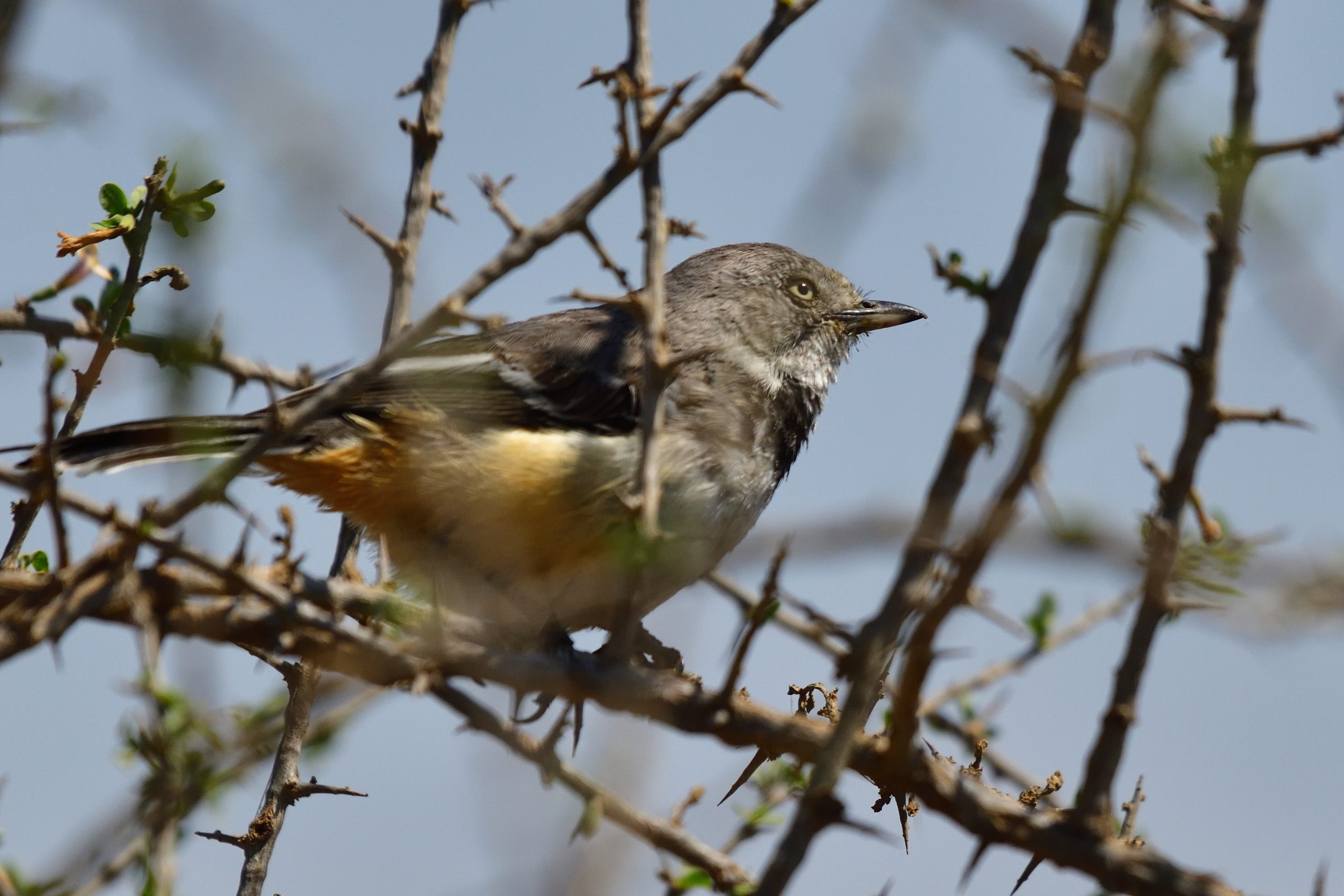
Banded Parisoma, Sylvia boehmi, Endemic to NE Africa
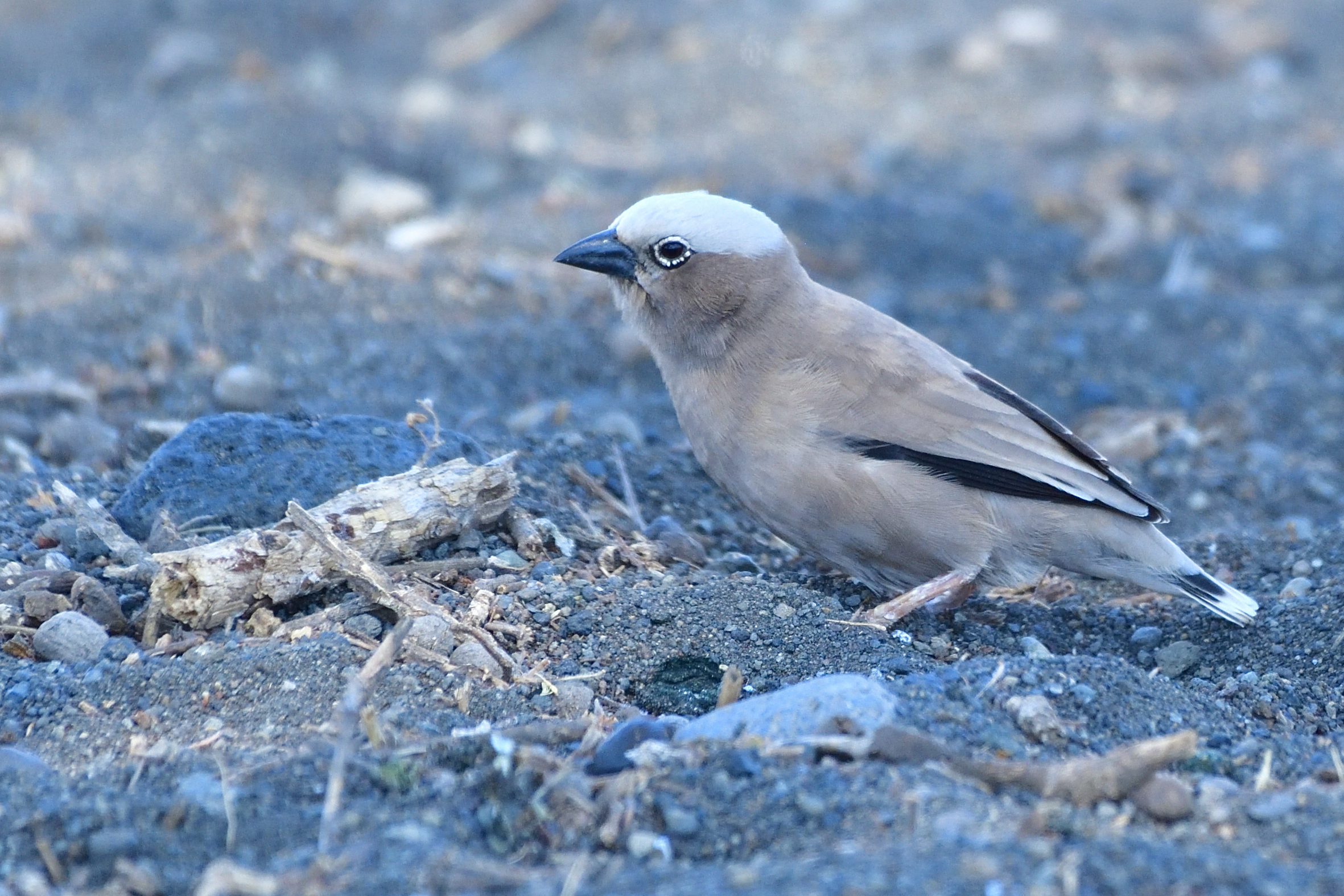
Grey-capped Social Weaver, Pseudonigrita arnaudi, Endemic to NE Africa
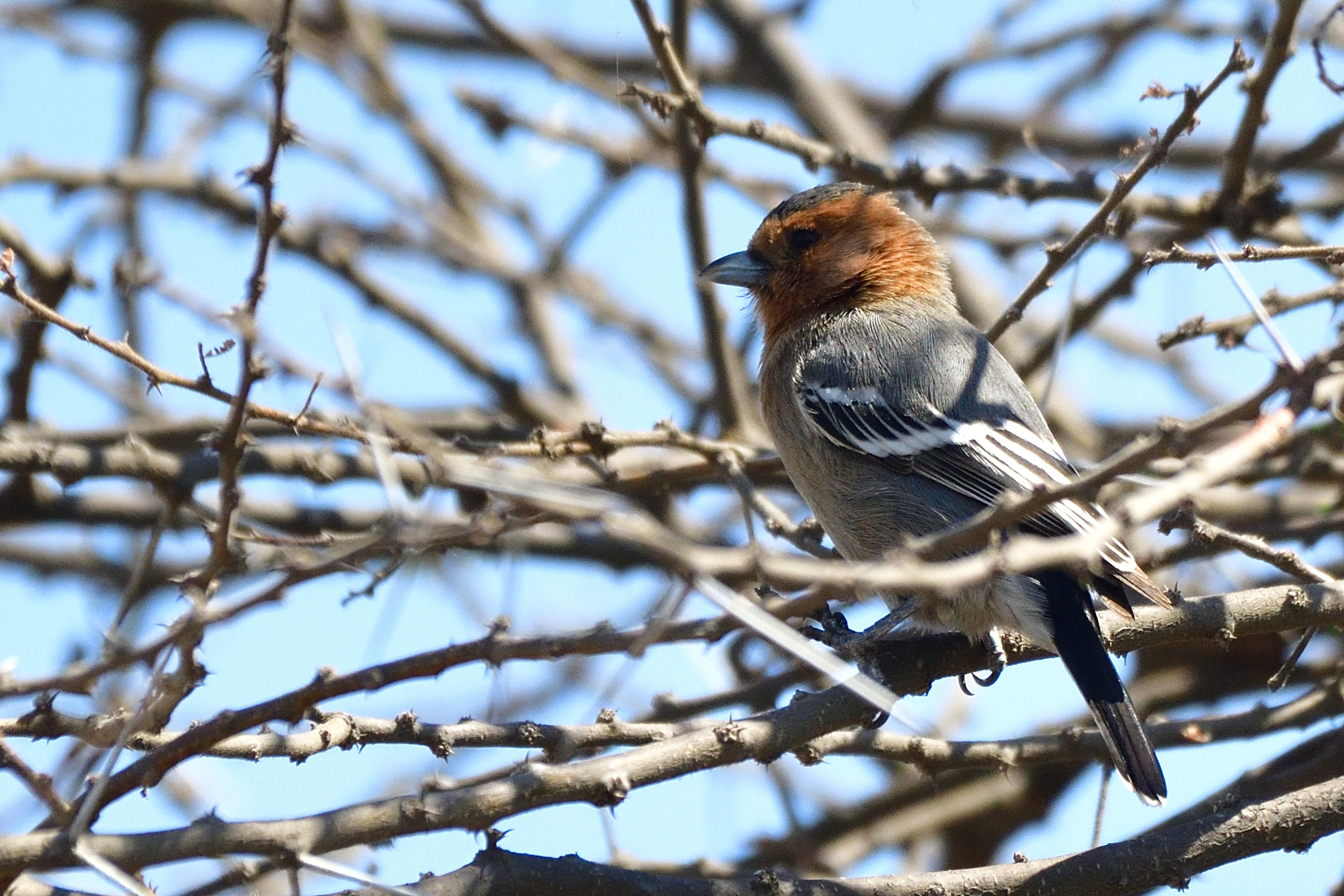
Red-throated Tit, Parus fringillinus, Endemic to N Tanzania and S Kenya
Day 3, Monday, September 27 – My house -Mererani and onwards towards the Masai Steppes.
We had an early start again and decided to drive the long way via the airport to avoid the bumpy roads. We arrived at 07:30. We had White-headed Mousebirds and Pringle´s Puffback (not targets for Rob). We heard the unmistakable call of the Pink-breasted Lark and found it with ease. Then there were some babbling just at the tree were we had parked and a family of Scaly Chatterers were hiding in there making for another easy tick. At the next stop, we found 3 targets: Hunter´s Sunbird, Tsavo Sunbird and Pygmy Batis. We stopped for Rob to get a better view of Bare-eyed Thrush before we drove to our normal breakfast spot. We were again running low on target birds and a small walk yielded two of them; Buff-crested Bustard and Somali Bunting. We continued a little further on the road where there is a nesting colony of Black-capped Social Weavers. They were busy repairing their nests and an easy target. Only 2 target birds to go for the day. We turned and drove back took a turn towards the man made lake. We tried to have lunch in the shade, but it was now around noon so shade was hard to find. We were scanning the lake shore for small birds drinking and there it was the Grey-headed Silverbill. We stopped a few hundred meters down the road and scanned and a single Golden-breasted Starling was sitting in good view. It was not even 14:00, but time to head back home. Rob had 10 lifers in his bag. We relaxed by the pool had a few beers, got served a delicious meal again and retired early to bed. Abdul packed the car for us for the safari that would start the day after.
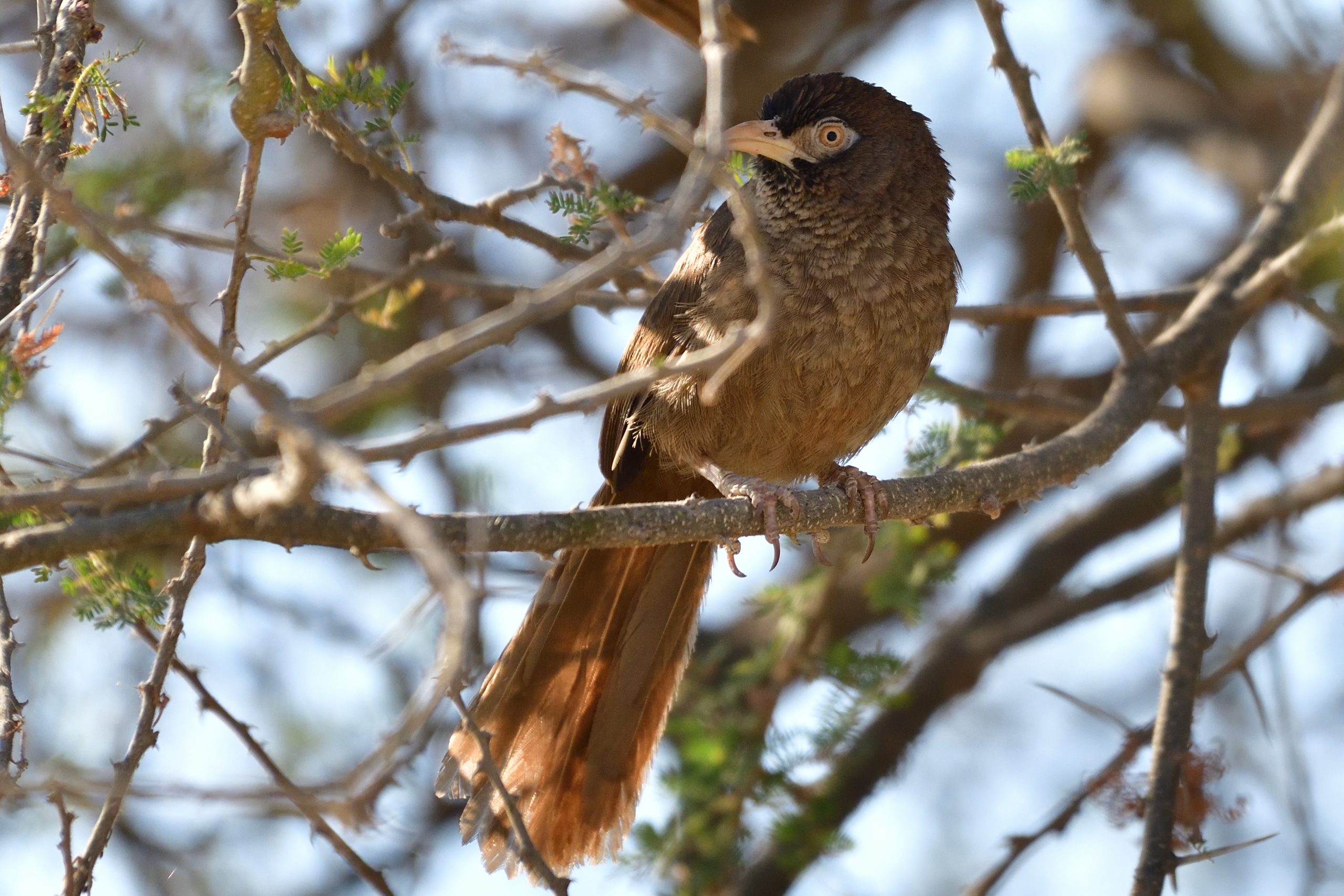
Scaly Chatterer, Turdoides aylmeri, Endemic to NE Africa
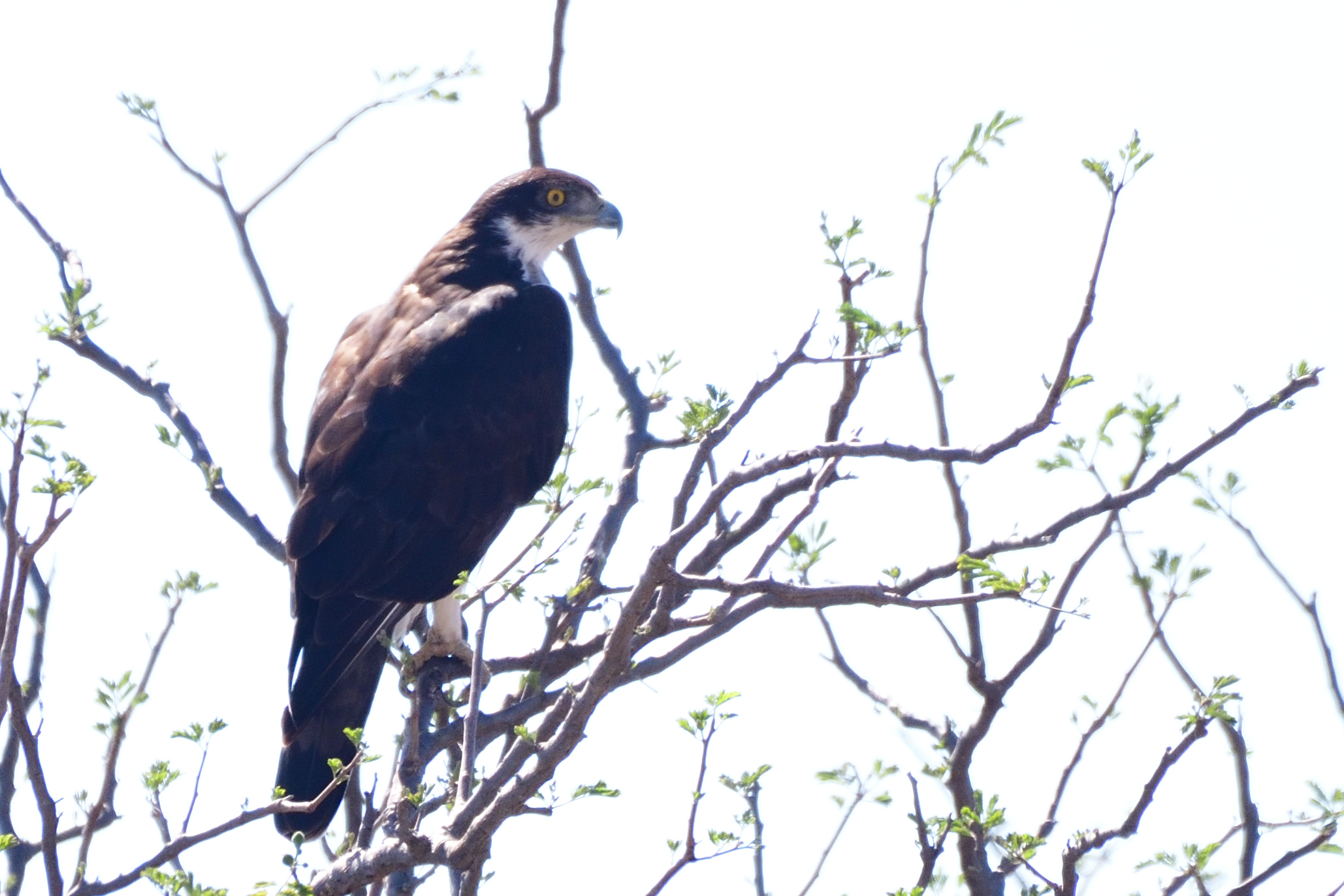
African Hawk Eagle, Aquila spilogaster
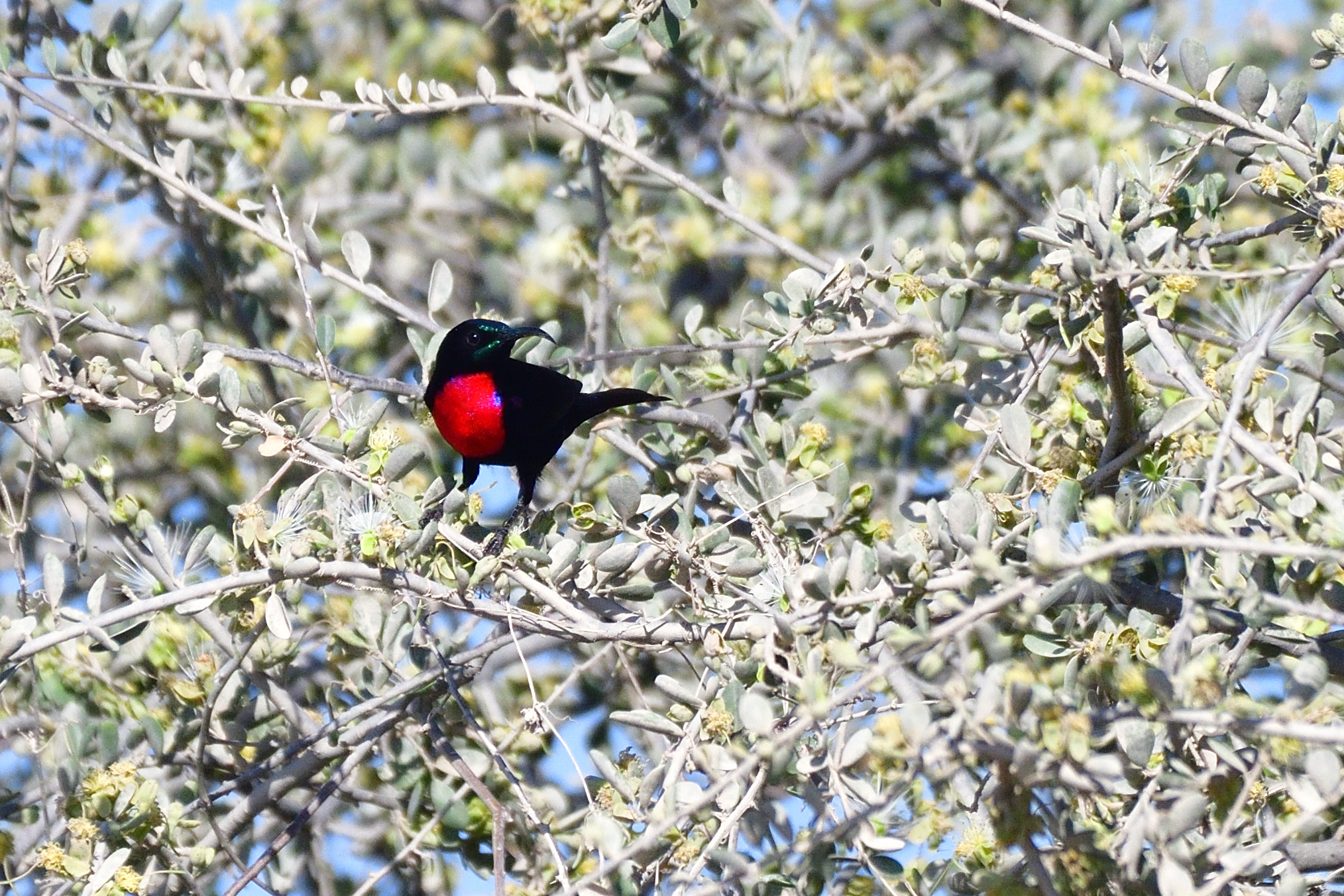
Hunter´s Sunbird, Chalcomitra hunteri, Endemic to NE Africa
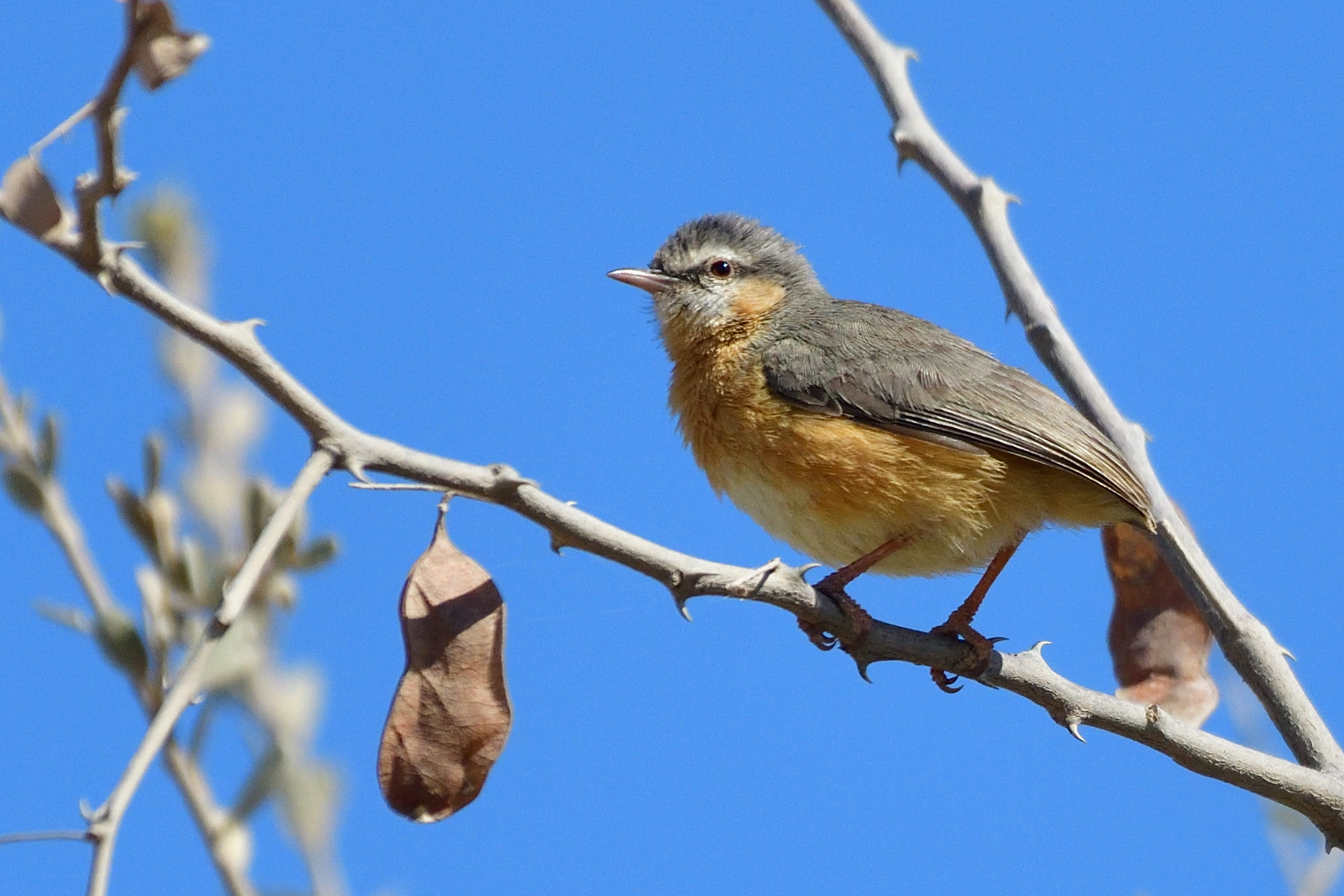
Northern Crombec, Sylvietta brachyura
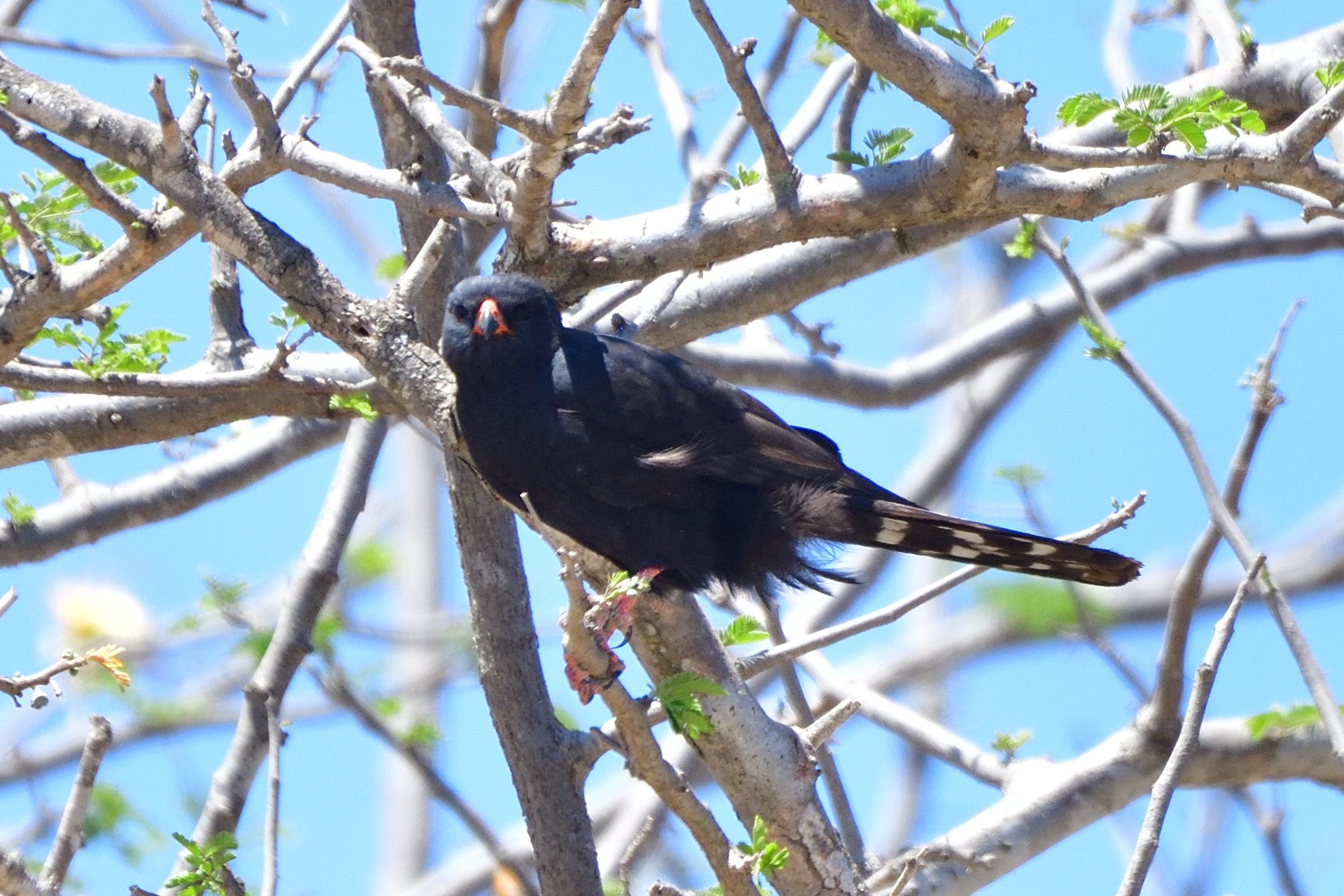
Melanistic Gabar Goshawk, Micronisus gabar
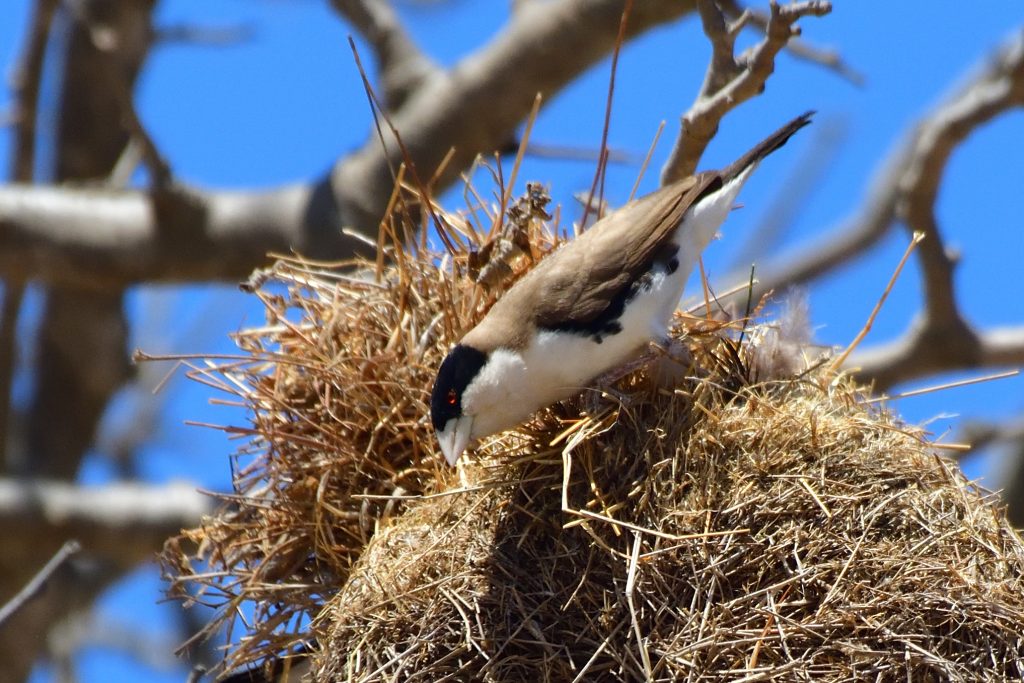
Black-capped Social Weaver, Pseudonigrita cababisi, Endemic to NE Africa
Day 4, Tuesday, September 28 – My House – Same and South Pare Mountains.
Let the Safari begin. We were really not in a real hurry this morning since we had bagged all the dry country specials. I normally stop at some habitat close to Nyumba Ya Mungu Dam on the way to Same, but there were no new target birds for us there so we continued to Same and drove to a little known habitat just outside Mkomazi National Park. It was already 10:30 when we reached our spot, but there was still some activity. Spot-flanked Barbet, D´Arnaud´s Barbet, Black-bellied Sunbird and Eastern Black-headed Batis were bagged. We just could not find the Mouse-coloured Penduline Tit. Abdul heard it, but we could not get eyes on it. We drove to Elephant Motel in Same where we checked in, had lunch and relaxed a couple of hours during the mid day heat. We were back in the car in the afternoon and drove up the South Pare Mountains. The roads were surprisingly good and we did good on time. The target here is of course the South Pare White-eye. We reached the peak at 16:00 and it was still too hot. we searched a little and could hear them, but they did not want to show. We got a Stripe-faced Greenbul and Usambara Double-collared Sunbird. We walked on the road through the forest a few times and we were about to give up. I suggested one more walk through the prime spot and sure enough I estimate a flock of up to 50 South Pare White-eye flew in to a tree next to the road and then after a while crossed the road. We returned to the car and drove back to the Motel where we freshened up and had dinner. Rob managed 7 lifer on this day and we had only dipped on the Mouse-colored Penduline Tit which we had a chance for the morning after.
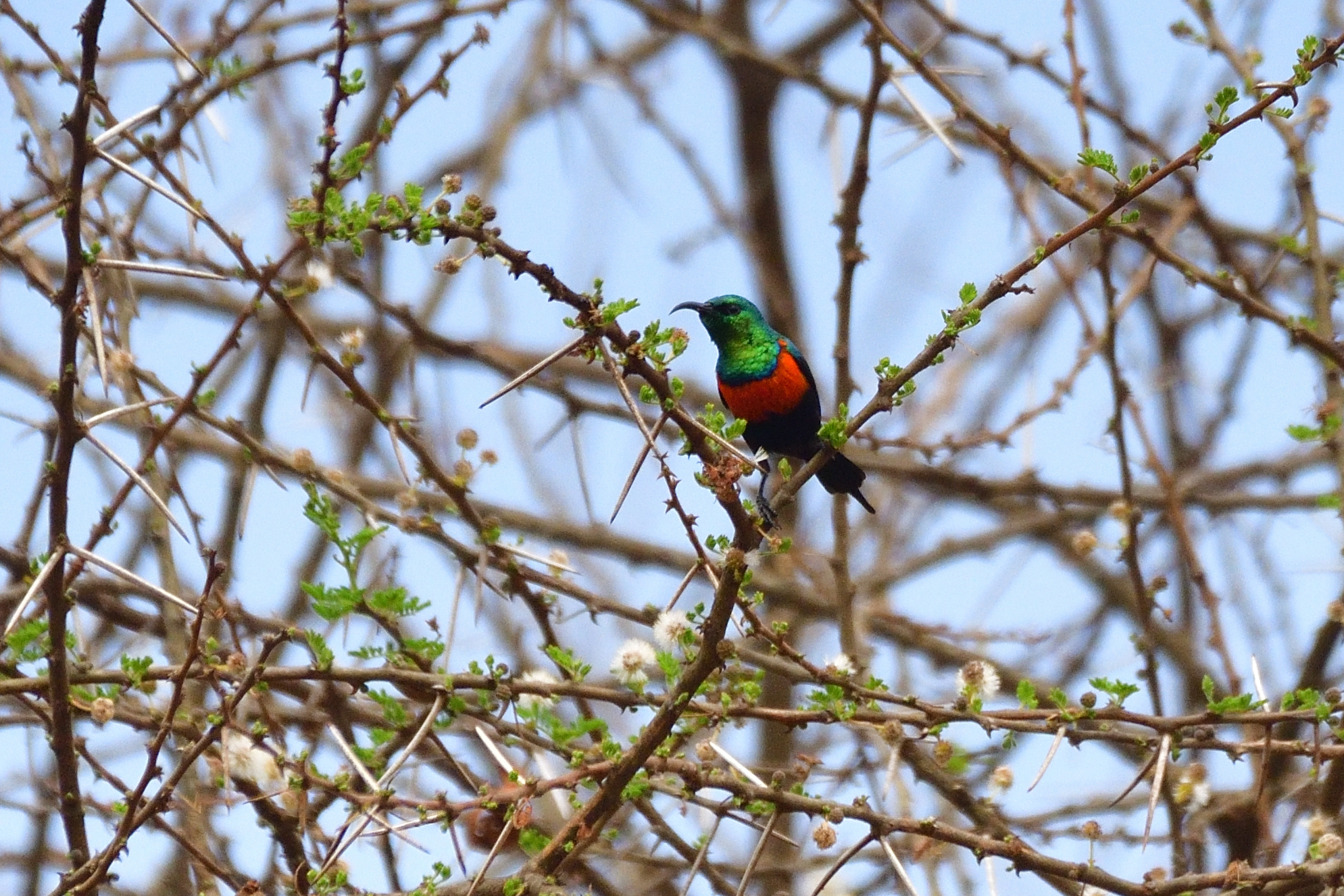
Black-bellied Sunbird, Cinnyris nectarinoides, Endemic to NE Africa
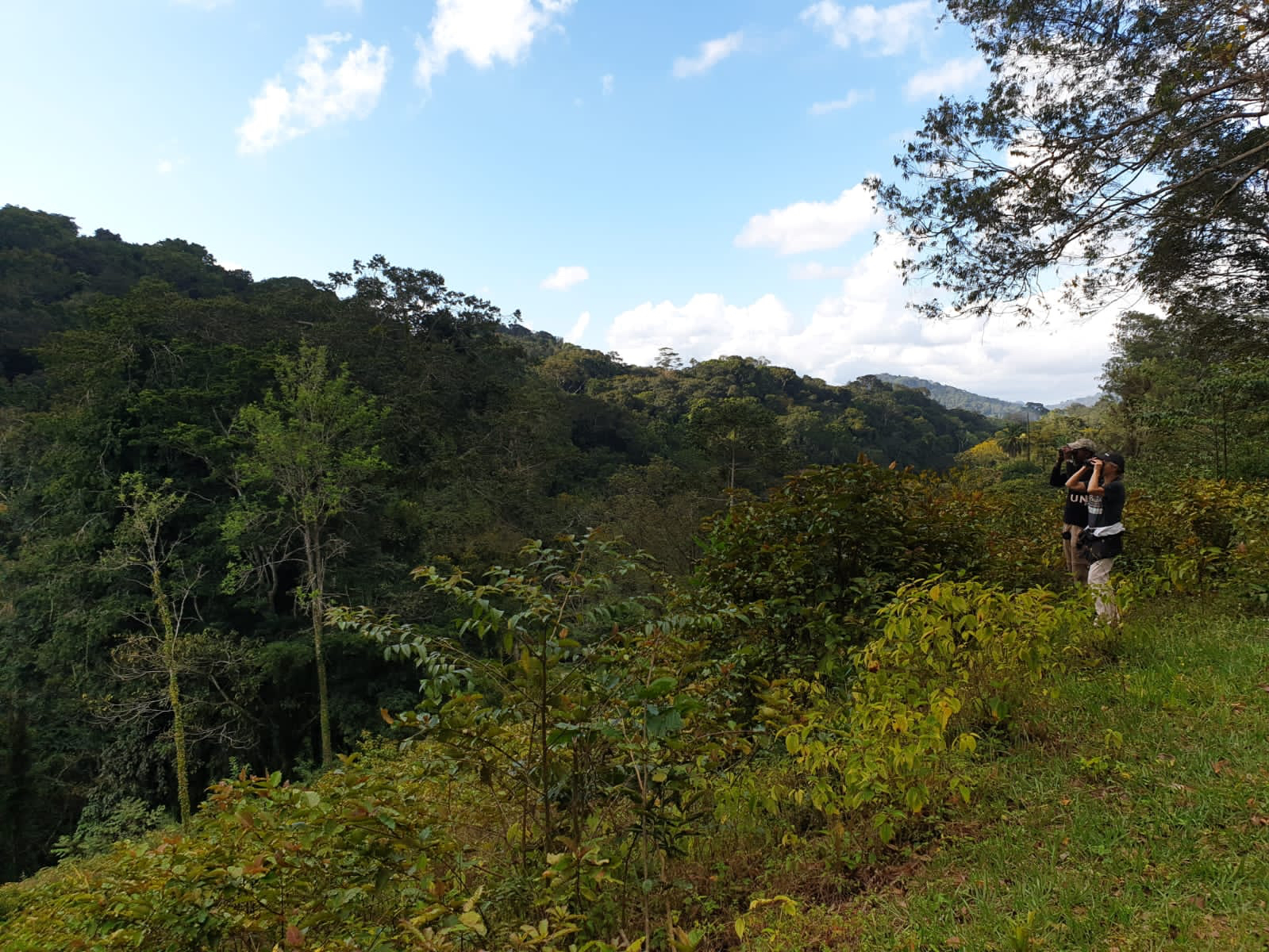
Spotting for the South Pare White-eye
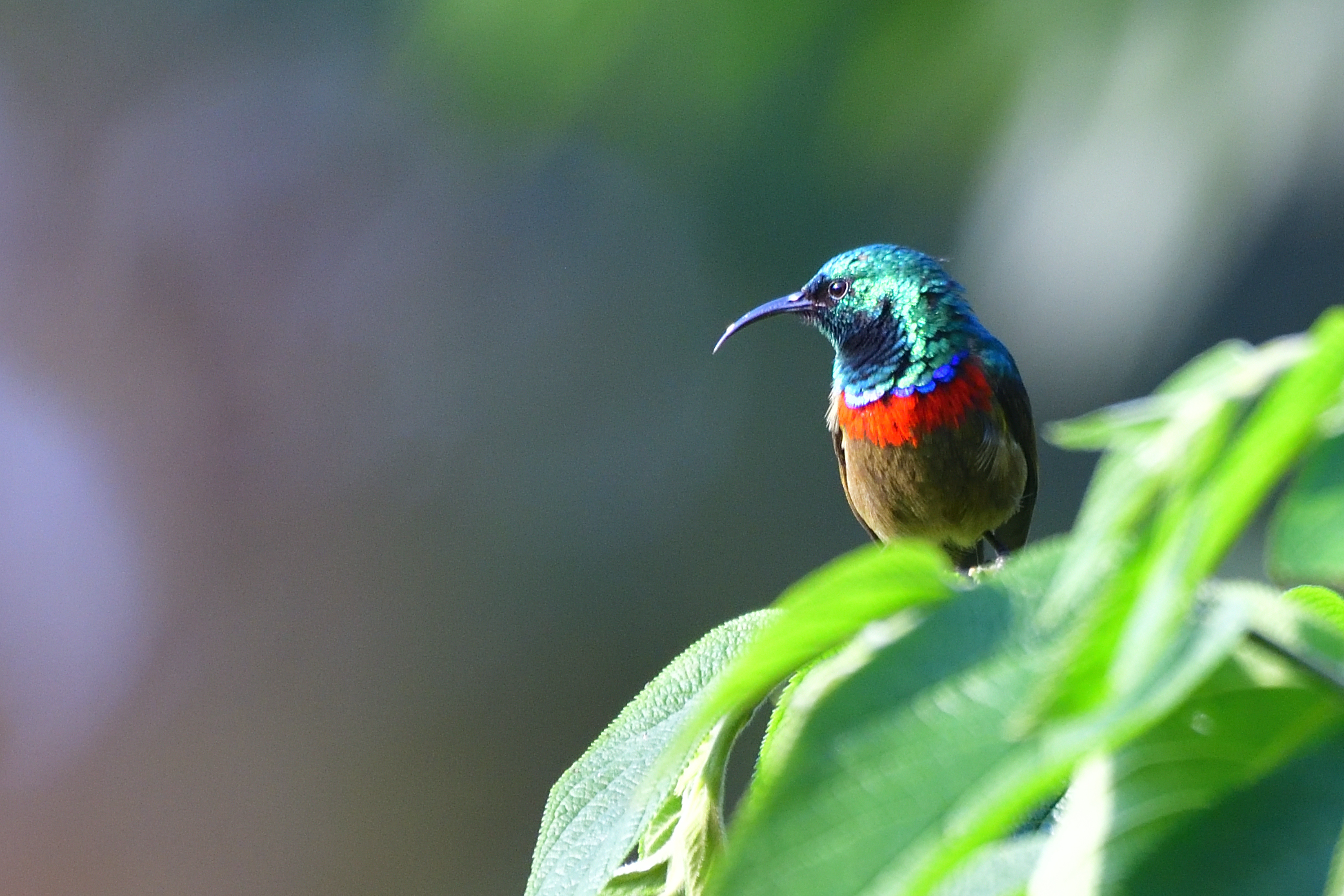
Usambara Double-collared Sunbird, Cinnyris usambaricus, Endemic to S Pare and Usambara Mountains, Tanzania
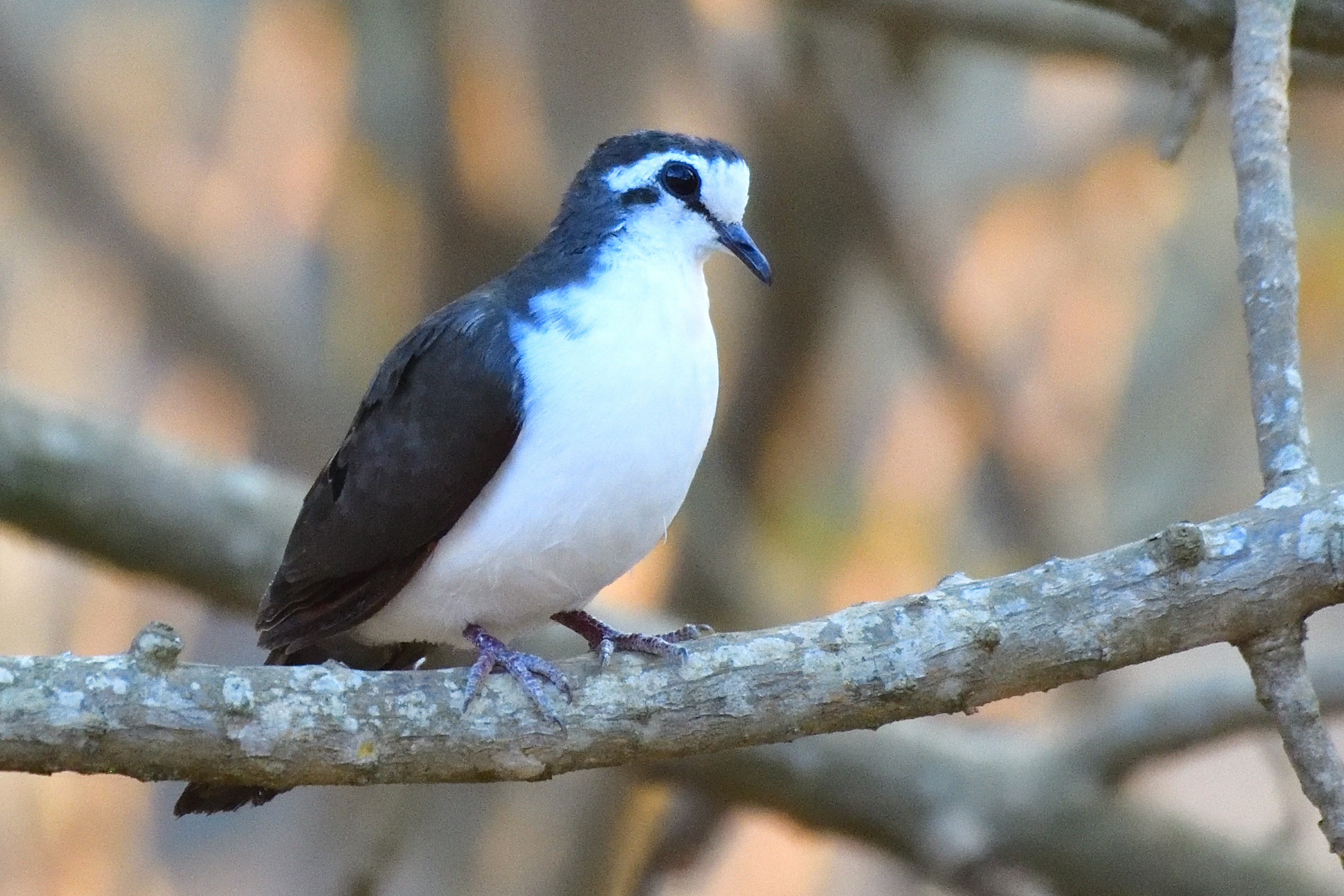
Tambourine Dove, Turtur tympanistria
Day 5, Wednesday, September 29 – Same – Magamba Forest, West Usambara
We were not in a hurry this morning either, but we had a date with a certain bird just outside the gate to Mkomazi. We stopped there and Abdul was on to the Mouse-coloured Penduline-Tit right away. We spent a little bit of time just walking the road and picked up some good birds, but nothing new on the target list. We returned to the Motel for breakfast, packed up and was soon on our way. There is 116 km to Mombo where we take off the main road and start climbing up towards Lushoto. We stopped in Soni where we stacked up on some groceries etc. We arrived at the entrance quite early, did the paperwork with my friend Gertruda there. Only 7 km more up to camp. There had not been much rain, so the road was in a pretty good shape. Once in camp, we rigged up had a quick rest and then started the afternoon walk uphill from camp. It was a very rewarding walk: Sharpe´s Starling, Hartlaub´s Turaco, Red-capped Forest Warbler, Waller´s Starling, Moustached Tinkerbird, Fülleborn´s Boubou and Black-headed Mountain Greenbul. I returned to camp before the others and had started cooking a chicken casserole. I had observed another target bird, Streaky Seed-eater while I was cooking and knew were to find it the day after. 8 lifers for Rob on this day. The gang returned we lit the fire and had a good time around the bonfire.
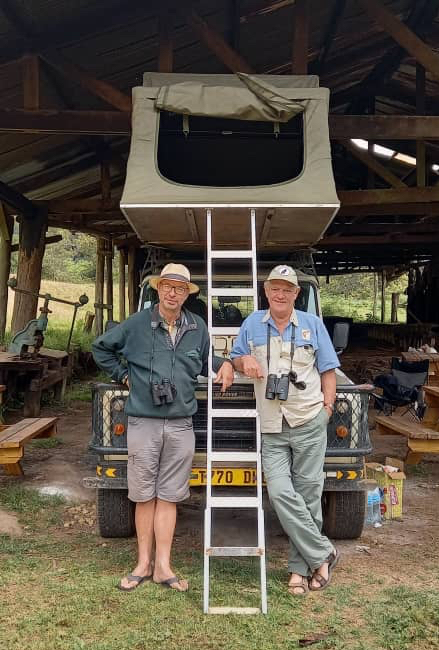
Camp in Magamba Forest
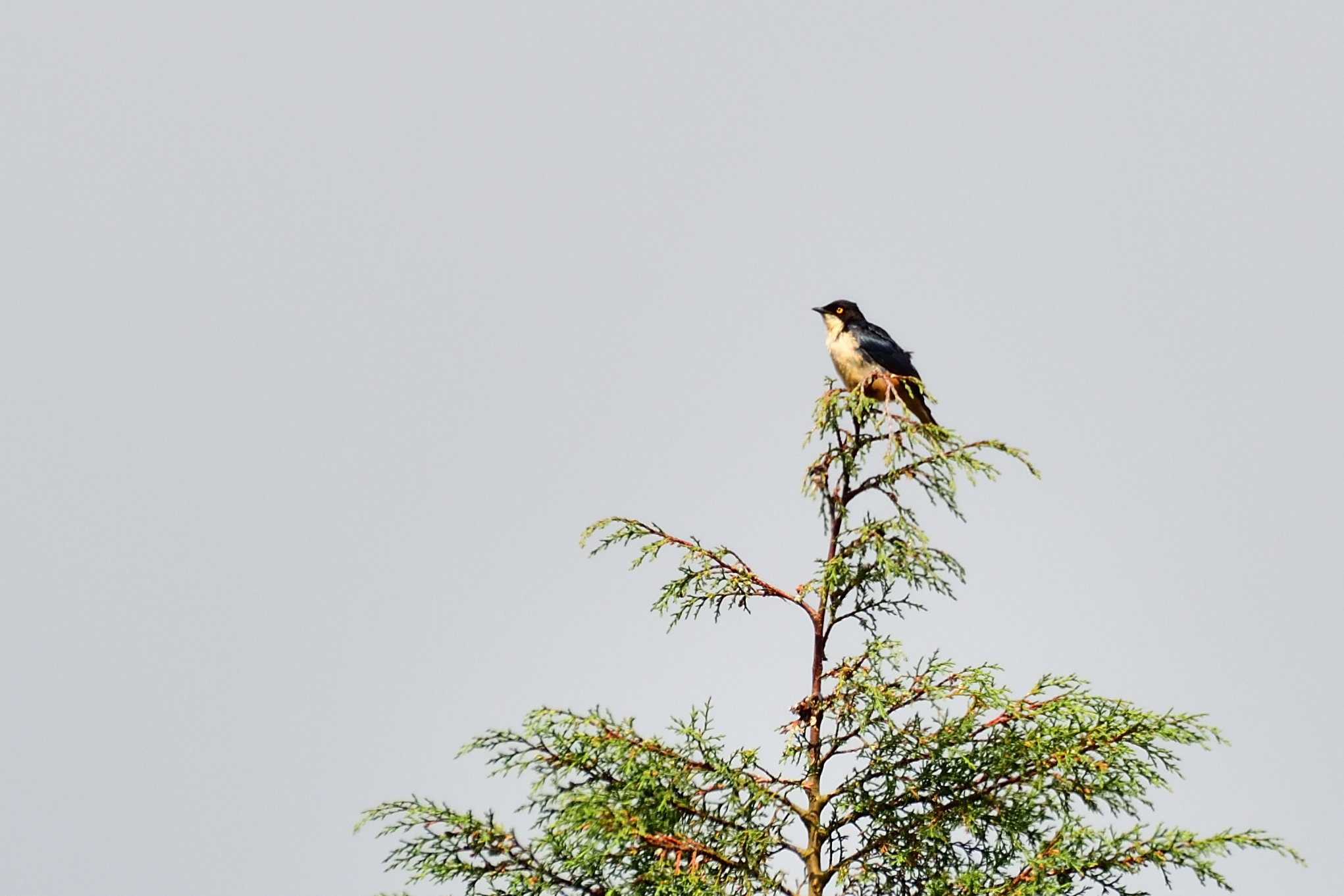
Sharpe´s Starling, Pholia sharpii, Endemic to NE Africa
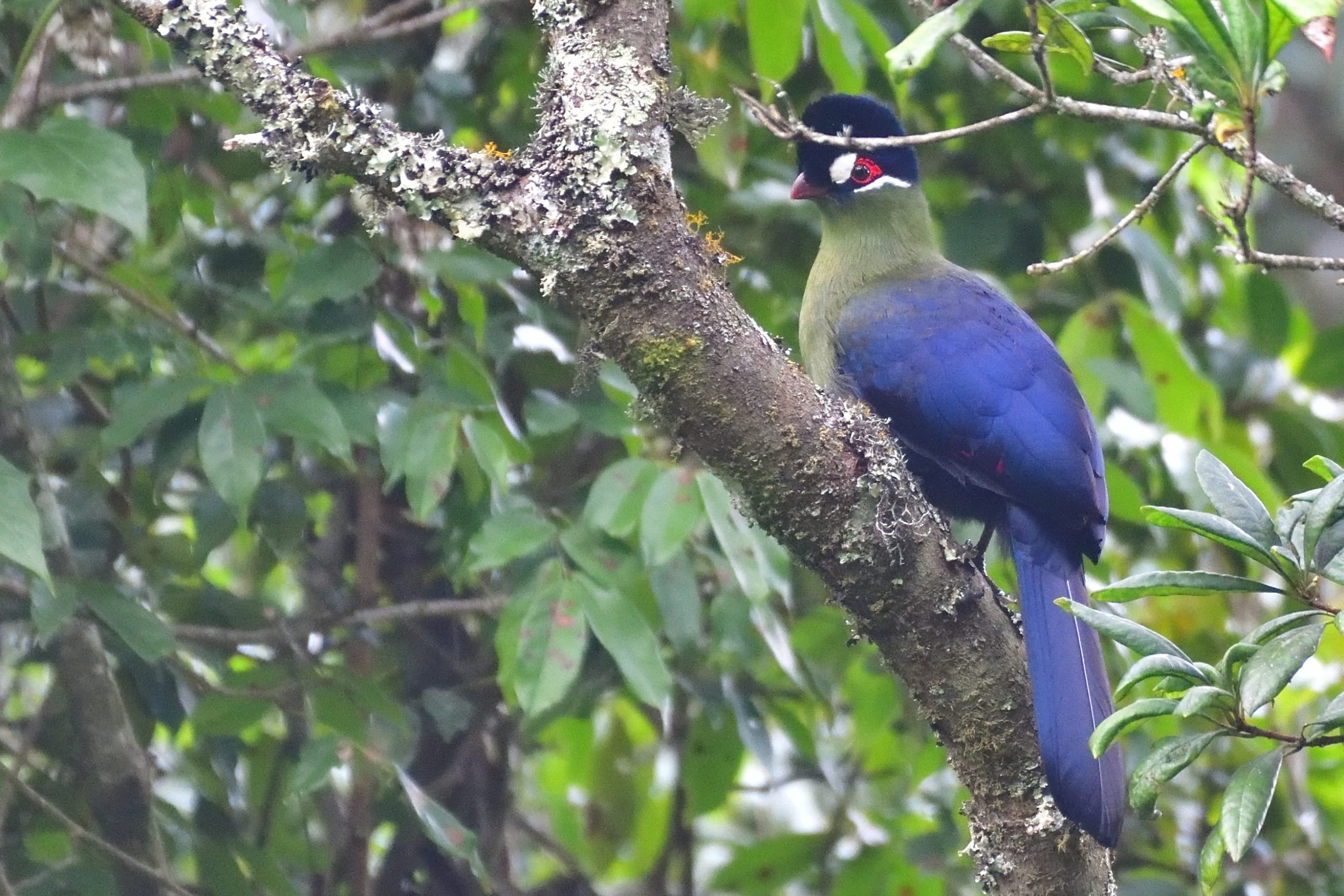
Hartlaub´s Turaco, Tauraco hartlaubi, Endemic to E Africa
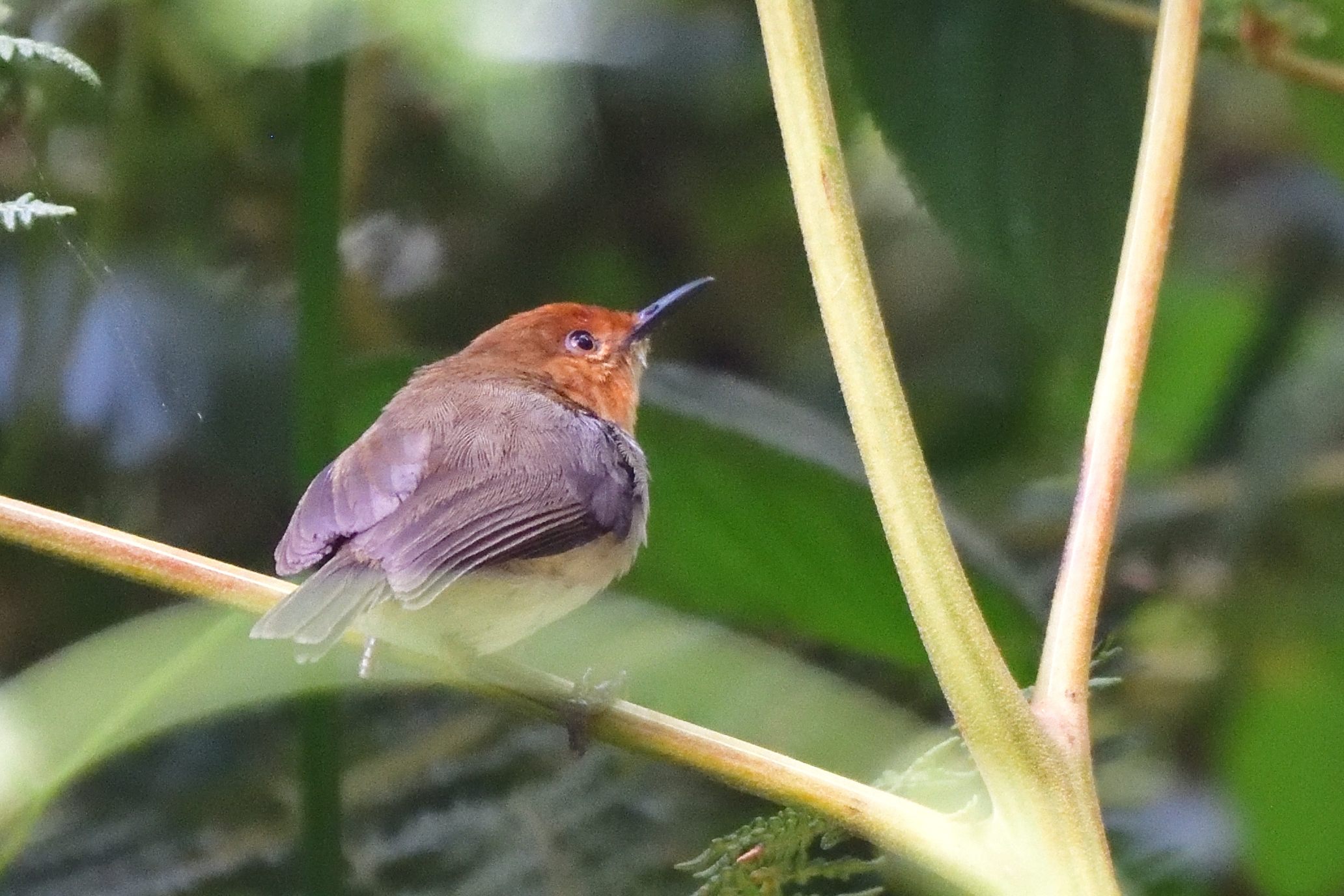
Red-capped Forest Warbler, Artisornis metopias, Endemic to Eastern Arc Mts of Tanzania and N Mozambique

The master chef in action
Day 6, Thursday, September 30 – Magamba Forest
We had a full day in Magamba Forest. I had Coffee ready at 06:45. We hung around camp for a while waiting for the light. While waiting we got the Streaky Seed-eater. At 07:30 we started the walk and had nice views of an Oriole Finch. We walked up to the normal Usambara Weaver spot and sure enough today it was home. I decided we walk a little down to try for some of the other target birds. We stopped at our normal Bar-tailed Trogon spot and soon had good views. I left the others in order to go back and prepare breakfast. When they arrived they had also picked up the Montane Tiny Greenbul. We had breakfast and relaxed for a while until it was time for the afternoon walk. We managed to find the Usambara Thrush pretty quick, but were struggling with the Usambara Akalat at the normal spot. I told them I had a spot just a couple of hundred meters down from camp and we decided to give it a try. The Usambara Akalat popped up. We returned very happy to camp knowing we had all of the West Usambara specials already. We had a nice dinner some more stories by the bonfire and we also decided that we only stay one more night at Magamba. All the time in Magamba, we had a Barred Long-tailed Cuckoo calling, but we never managed to get a view of it.
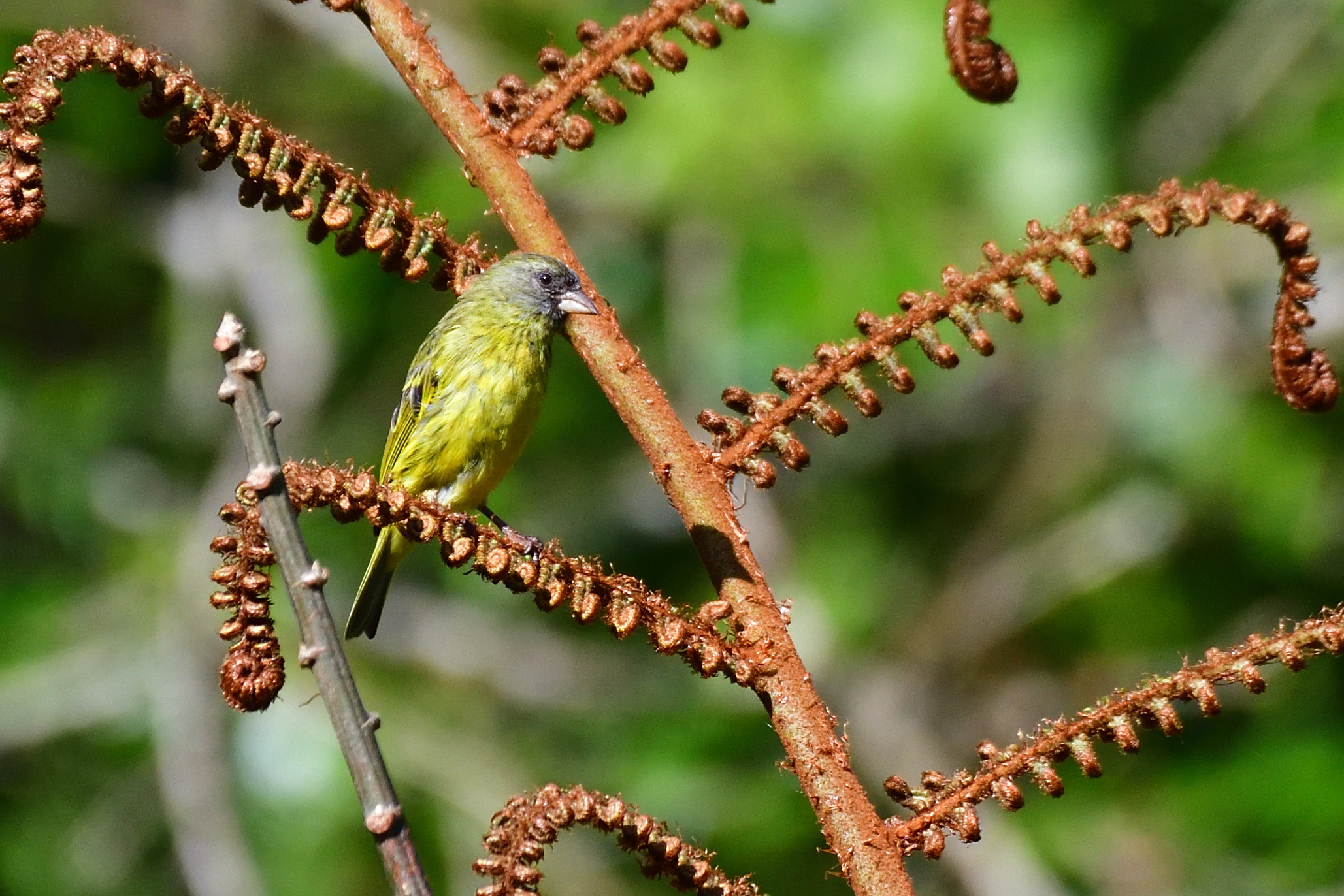
Southern Citril, Chritagra hyposticta, Endemic to SE Africa
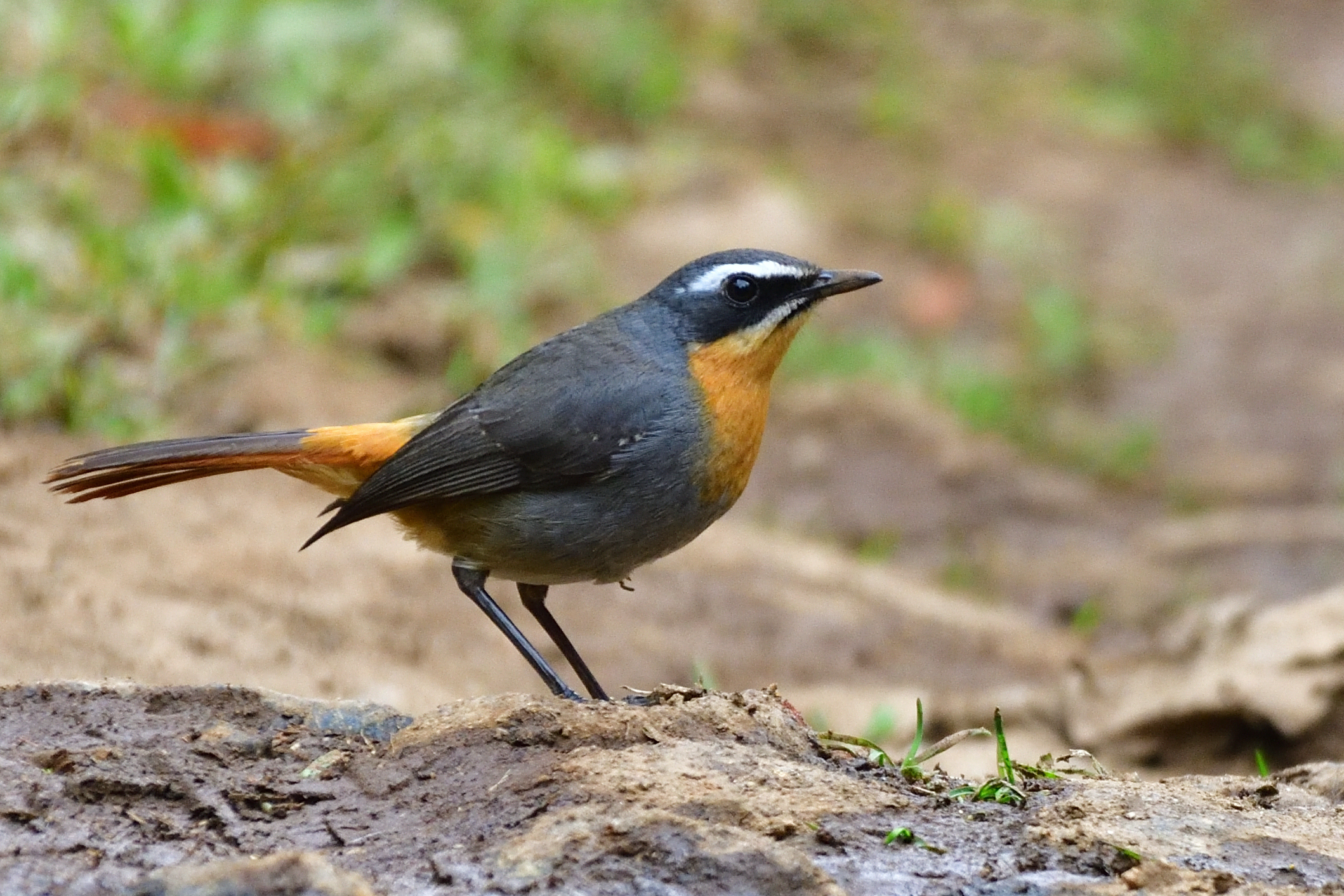
Cape Robin-Chat, Cossypha caffra
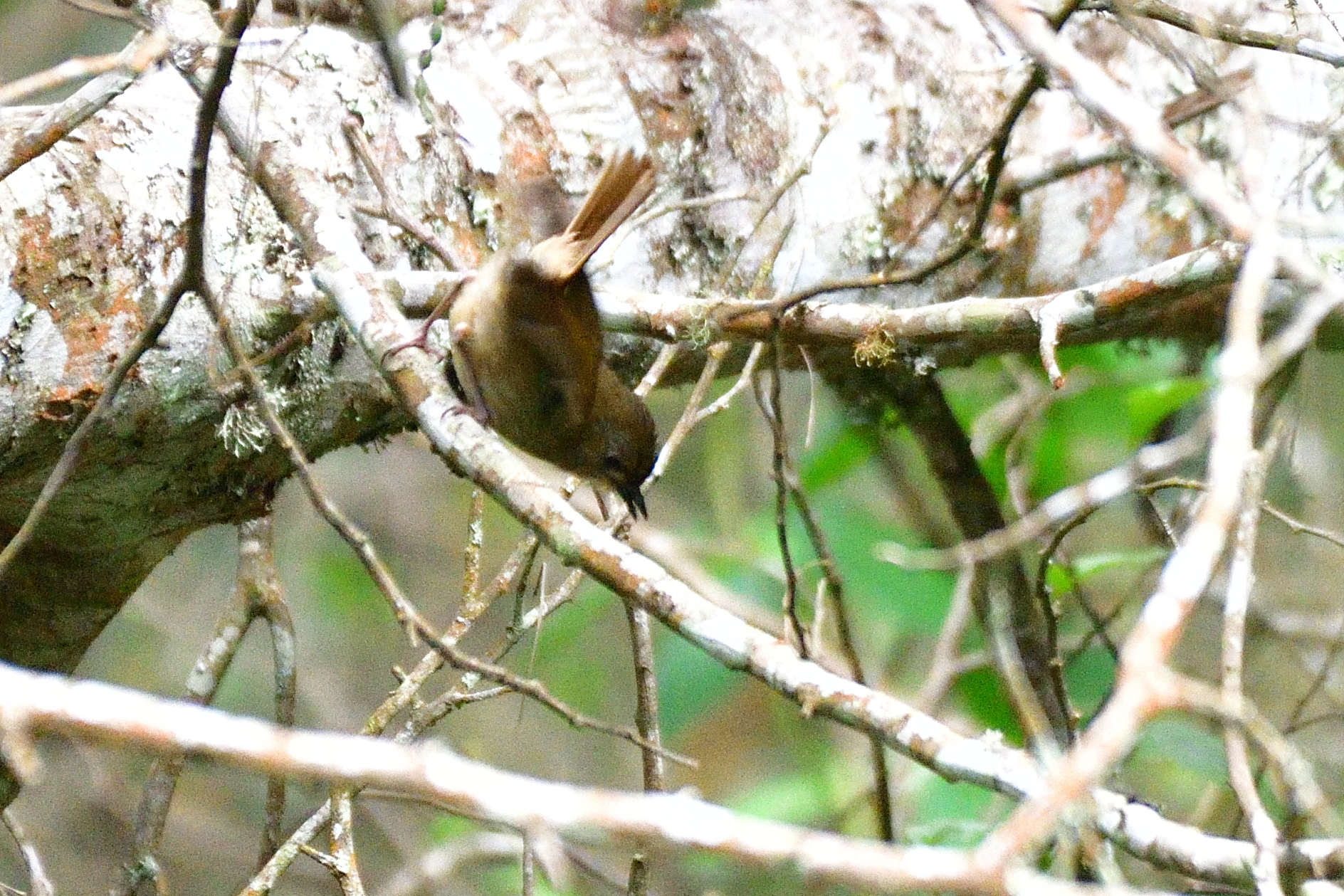
Usambara Akalat (a little late with the shot), Sheppardia montana, Endemic to Western Usambara, Tanzania
Day 7, Friday, October 1 – Magamba Forest West Usambara to Amani Forest East Usambara
Abdul and Rob went for the morning walk while Karen and I stayed behind and packed camp. When they returned to camp they had managed to get Spot-Throat and African Hill Babbler. We had breakfast and was soon on our way from about 2000 meters down to Mombo at about 300 meters. We arrived safely and had our next stop in Muheza to buy some supplies. We stopped a few km out of Muheza for the Coastal Cisticola. We drove up in the forest and stopped at our normal spott for the Usambara Hyliota, but despite having a nice bird party in front of us, no sign of the Hyliota. We continued to camp and checked in. We still had time for a little walk so to save time I took the car down to the normal spot and found very quickly a male and female Banded Green Sunbird + a pair of Kenrick´s Starling. We drove back to camp, freshened up and went down for dinner. We were all too tired to even think about the Usambara Eagle-Owl that night.

A small frog visited our porch
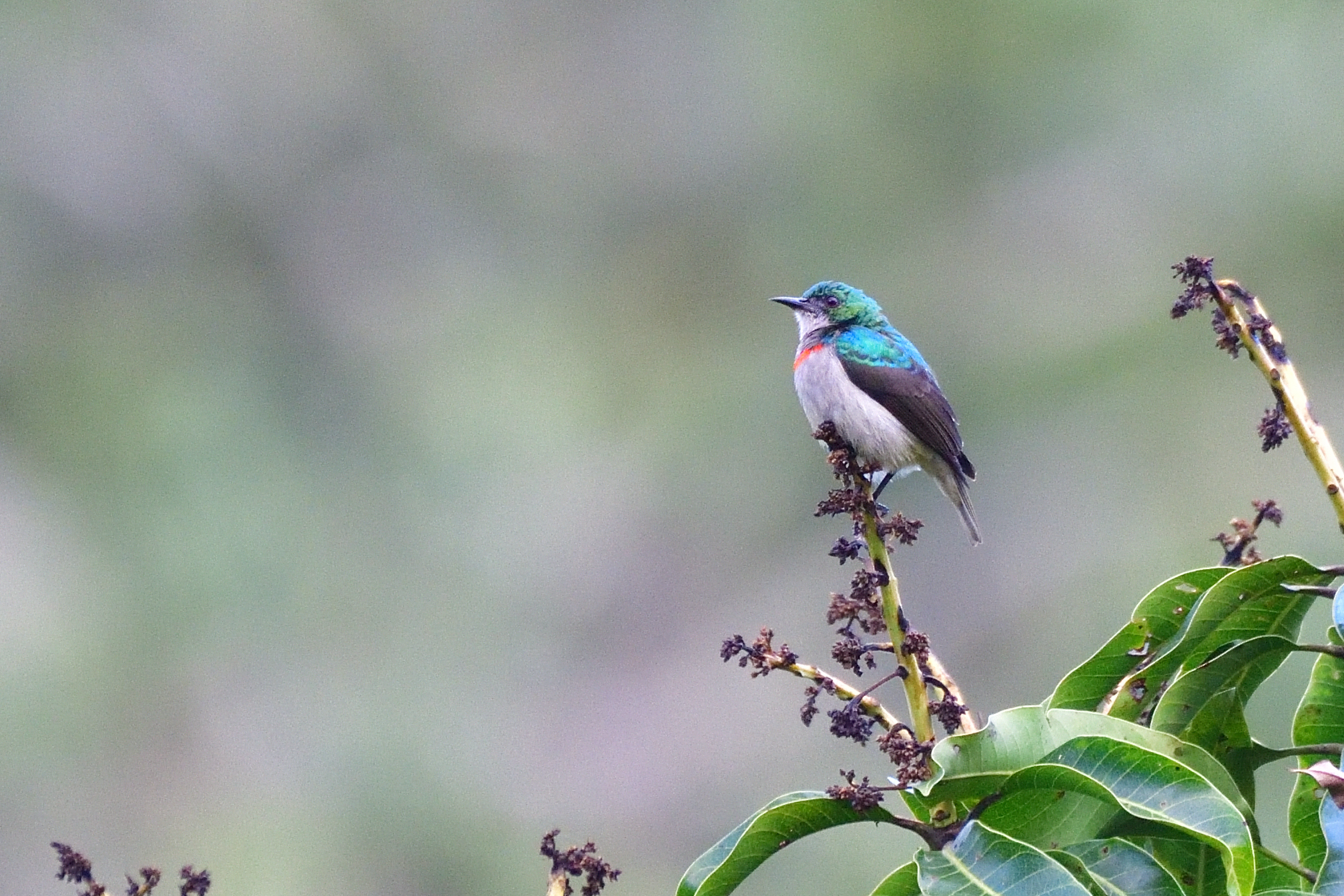
Banded Green Sunbird, Anthreptes rubritorques, Endemic to Eastern Arc Mts. of Tanzania
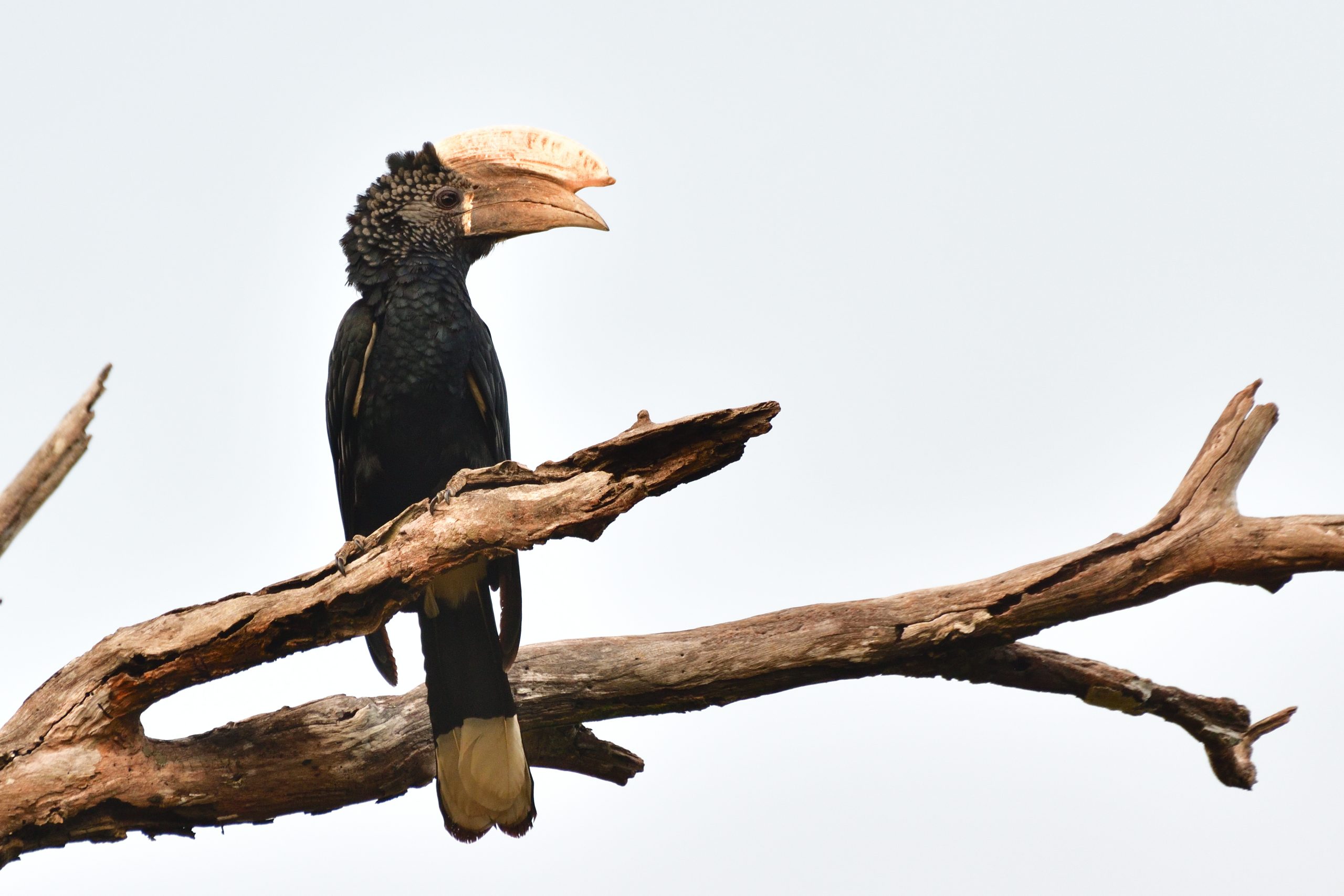
Silvery-cheeked Hornbill, Bycanistes brevis
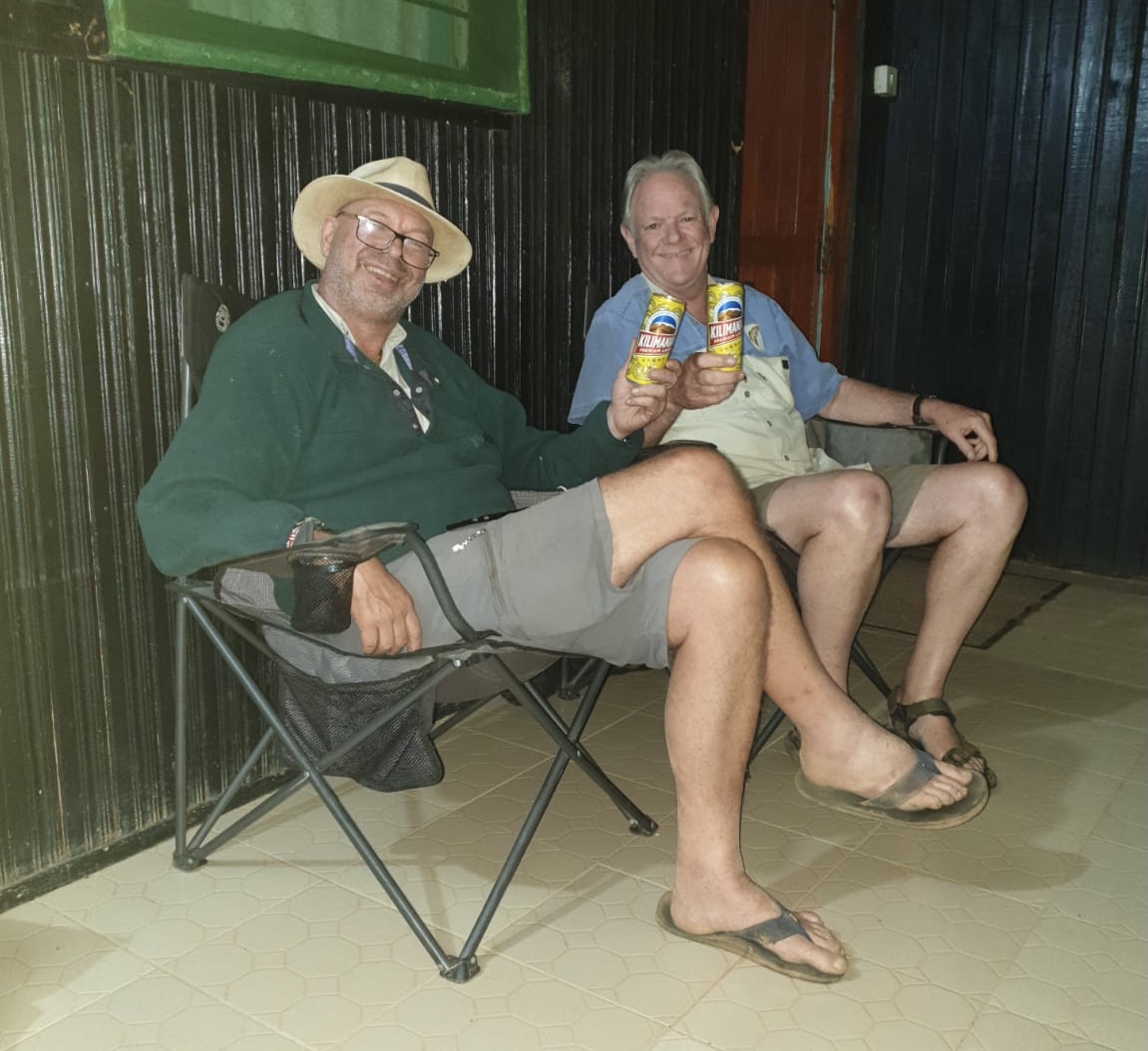
The boys are having a well deserved refreshment after a long day
Day 8, Saturday, October 2 – Full day Amani Forest.
We loaded the car early with packed breakfast and headed a little further up in Amani Forest. The two targets Kretchmer´s Longbill and Long-billed Forest Warbler proved not to hard to fine.The habitat they used to stay in had disappeared, but we found them in similar habitat not far away. As a bonus Rob spotted a Fischer´s Greenbul. With those two in box, we moved on to another patch of forest in order to find the elusive Sharpe´s Akalat. The road was very wet and at one point I managed to get stuck. After some time we managed to get my Landy out of the mud and was ready for the challenge. We picked up the sound pretty quick, but to get a good view of these elusive birds are not easy. In the end, we all had good views and I even managed to get a passable picture. We returned to camp for lunch. After a small siesta we were ready to walk the botanical garden, but the only new addition to the target list was Uluguru Violet-backed Sunbird. We were still missing the Fischer´s Turaco, but Abdul and I have a spot for that as well. We stopped in a village and Abdul lead the group. They came back with smiles all over. Another in the box. We returned to camp, had dinner and decided that we did not need an extra night in Amani (This is the first time ever I have done Amani with only 2 nights).
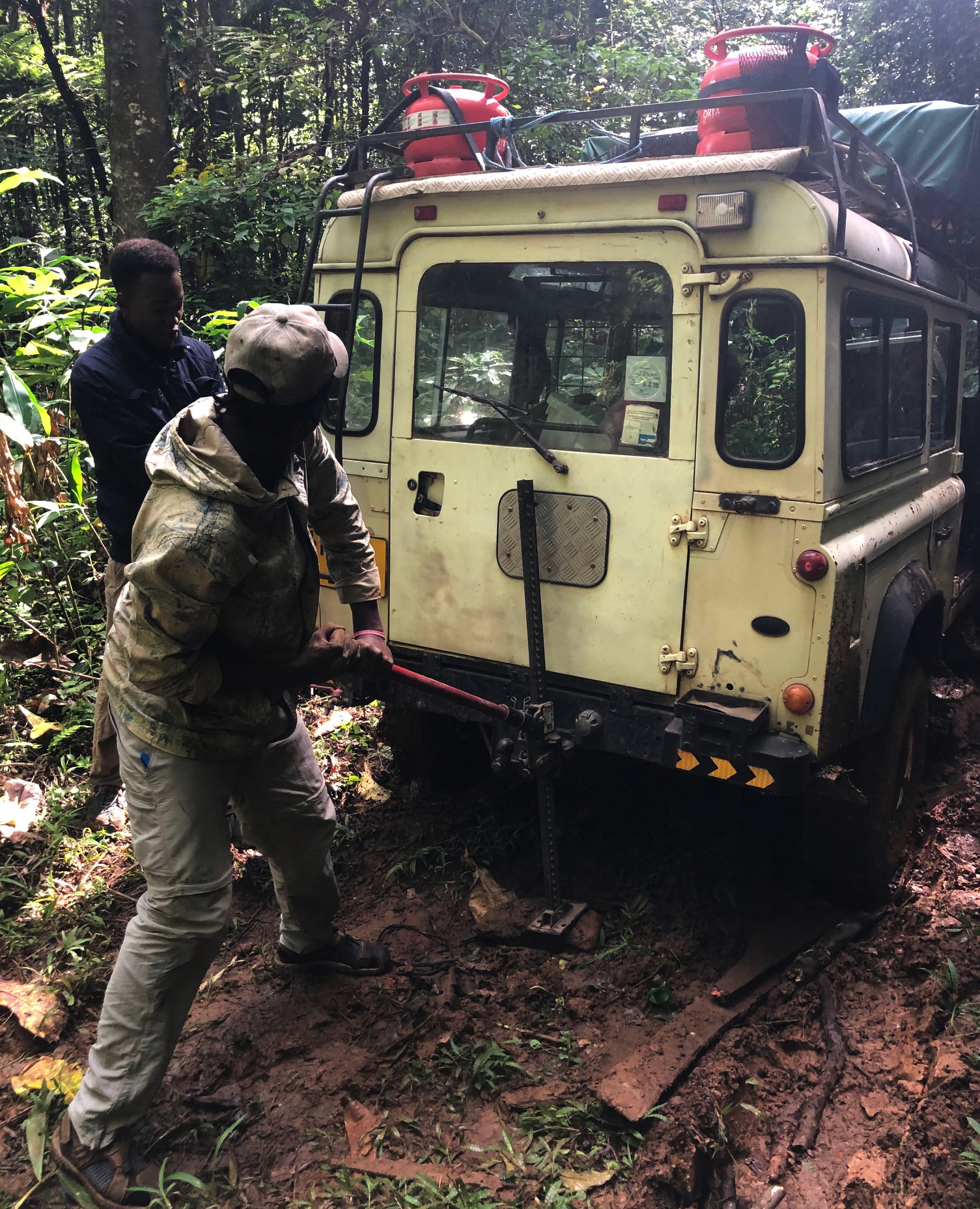
Stuck
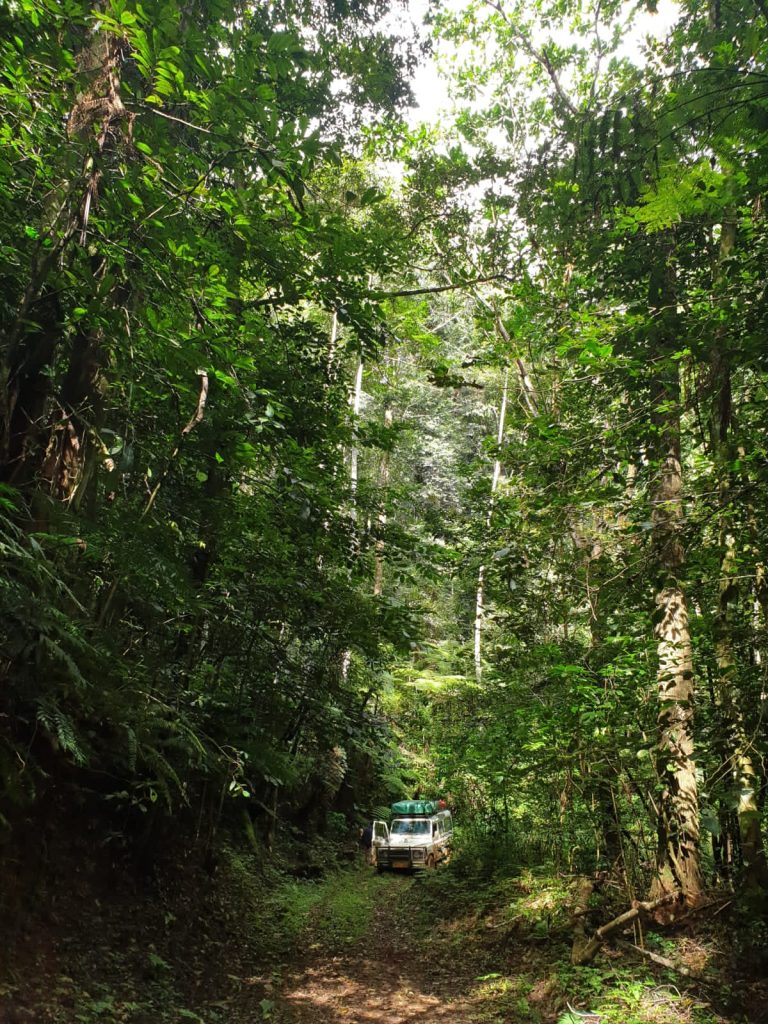
Landy in Sharpe´s Akalat territory, Picture by Rob
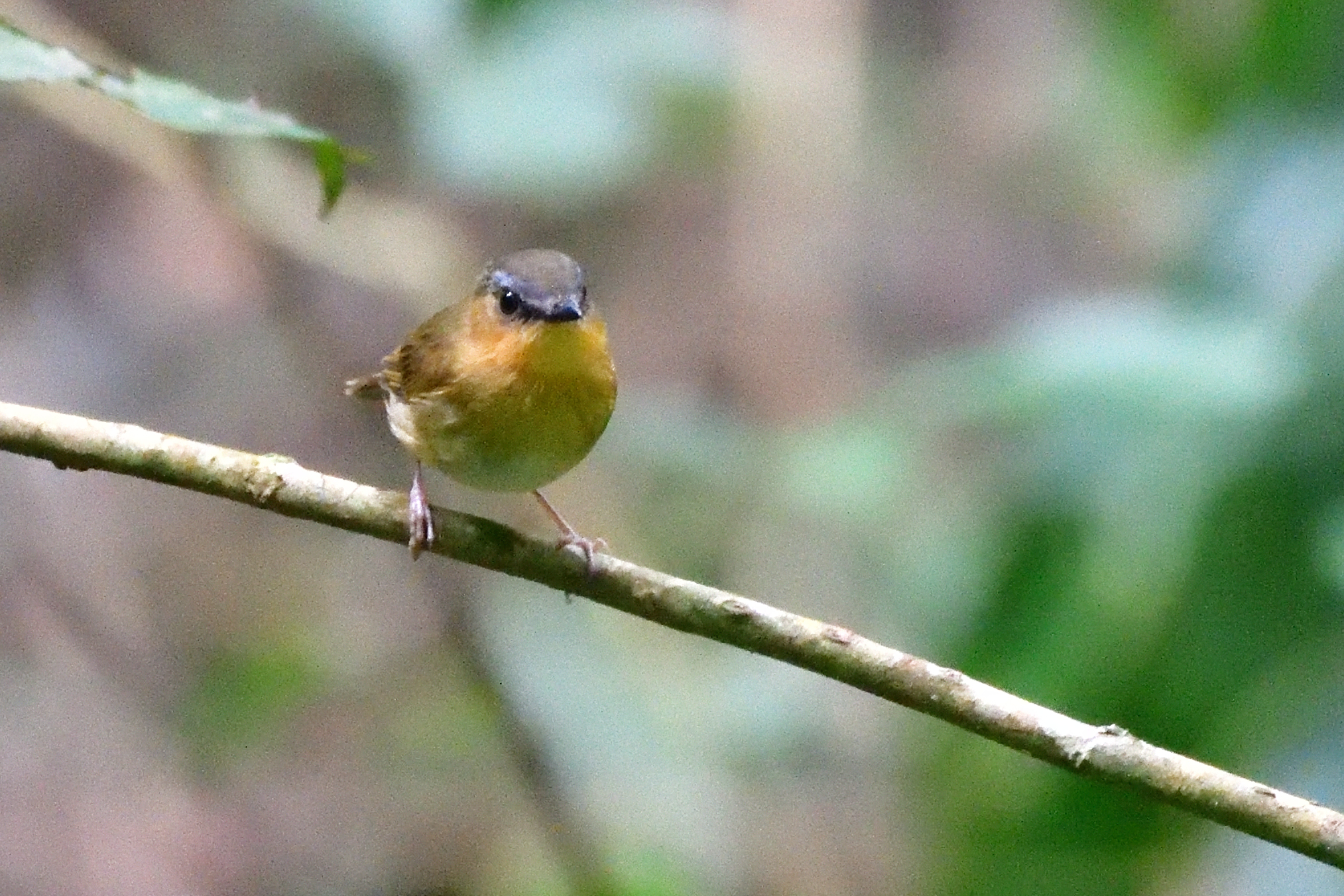
Sharpe´s Akalat, Sheppardia sharpei, Endemic to Eastern Arc Mountains
Day 9, Sunday, October 3 – Amani Forest – My house
We packed up the car in the morning and drove down to the lower part of the forest. Still no sign of the Usambara Hyliota, so we continued all the way home. Normally we stop in Same for an afternoon walk and a morning walk, but since we had cleaned up there, it did not make any sense. Sunday is a very nice day to drive in Tanzania due to most traffic police are having the day off. We made good time and could park the car in my driveway at 16:30. We were greeted by Selvine that soon had a delicious dinner served for us.
Day 10, Monday, October 4 – My house
We had done the Safari in record time (5 nights vs normally 7-8). It certainly helped that Rob was not a photographer. We decided to just wind down on this day and tell some stories by the pool and at dinner. It aslo turned out that Karen was an expert seamstress. I have an old Bernina sewing machine that I inhereted from my late mother. Selvine and I have been trying to master this monster without too much success, but with Karen´s ample help, Selvine is now doing very good with the machine.

Selvine is getting instructions from the expert.
Day 11, Tuesday October 5 – My house to Arusha National Park.
Rob had one prime target to day, The Schuett´s (Scaly) Spurfowl. I had an idea where to find it and we went straight for the Ngurduto crater and took the left fork. we drove and drove, but there at the glades we had a pair feeding in the road just in front of us. We stopped and had a refreshment and as Rob and I celebrated, Abdul quickly got on to a Brown Woodland Warbler. We turned the car and around one of the first bend we found a Rüppel´s Robin-Chat. We went up the other fork of the Ngurduto Crater, stopped at our usual picnic spot and had breakfast. Whilst eating we were entertained by a Broad-ringed White-eye. After breakfast, we crossed the park and started going up Mount Meru. We heard the Abyssinian Crimsonwing several places, but could not see it. We stopped at the Fig tree and Abdul quickly found a Thick-billed Seed-eater. We continued up towards the waterfall and just before the waterfall, we had good views of the Abyssinian Crimsonwing. We had lunch by the beautiful water fall and had gotten all our targets for today, so we started slowly on our way back home. Another good day.
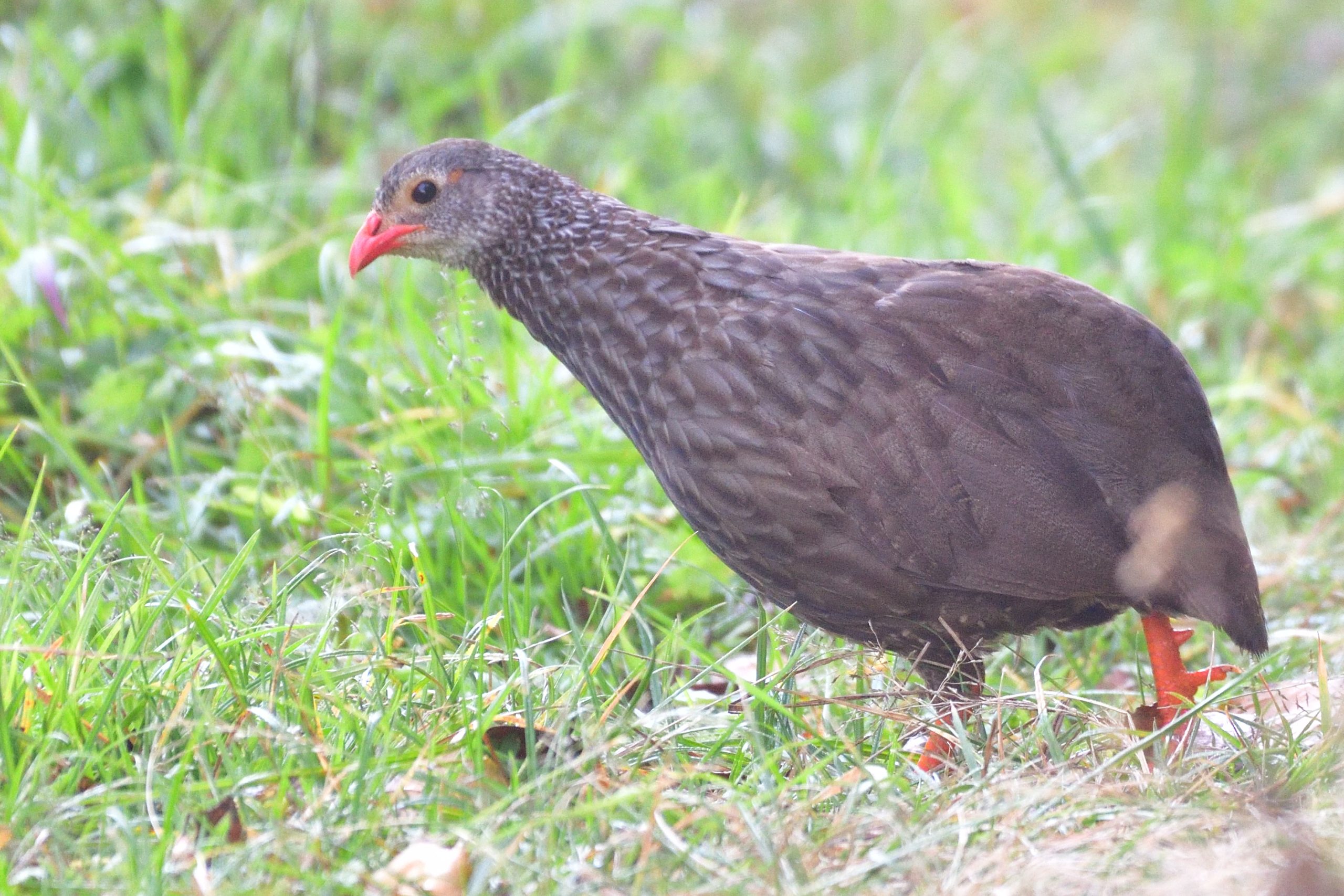
Schuett´s (Scaly) Spurfowl, Pternistis Schuetti
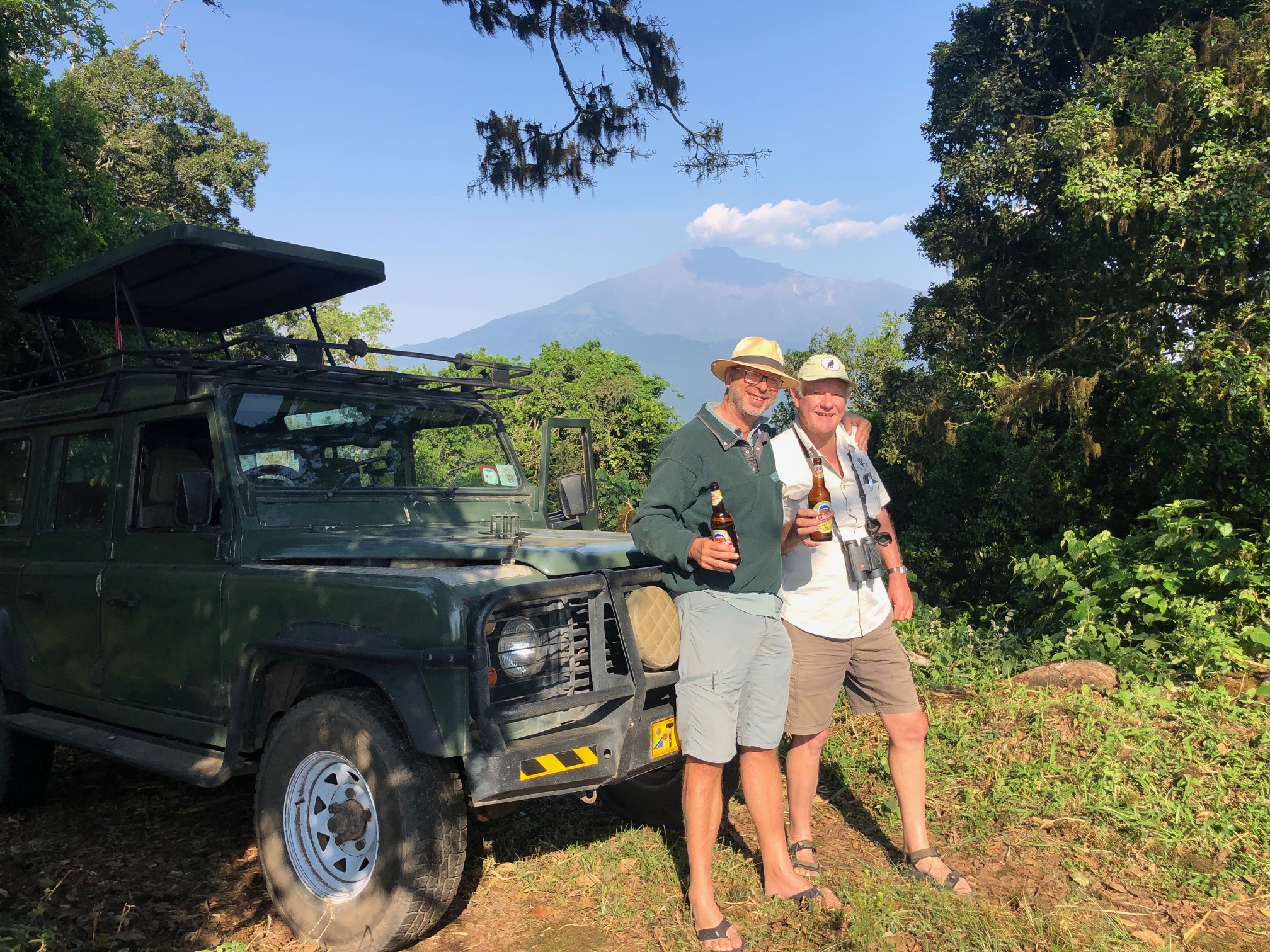
A big lifer for Rob needed to be celebrated even though it was not 4 thirsty yet 🙂

Rüppel´s Robin-Chat, Cossypha semirufa, Endemic to NE Africa
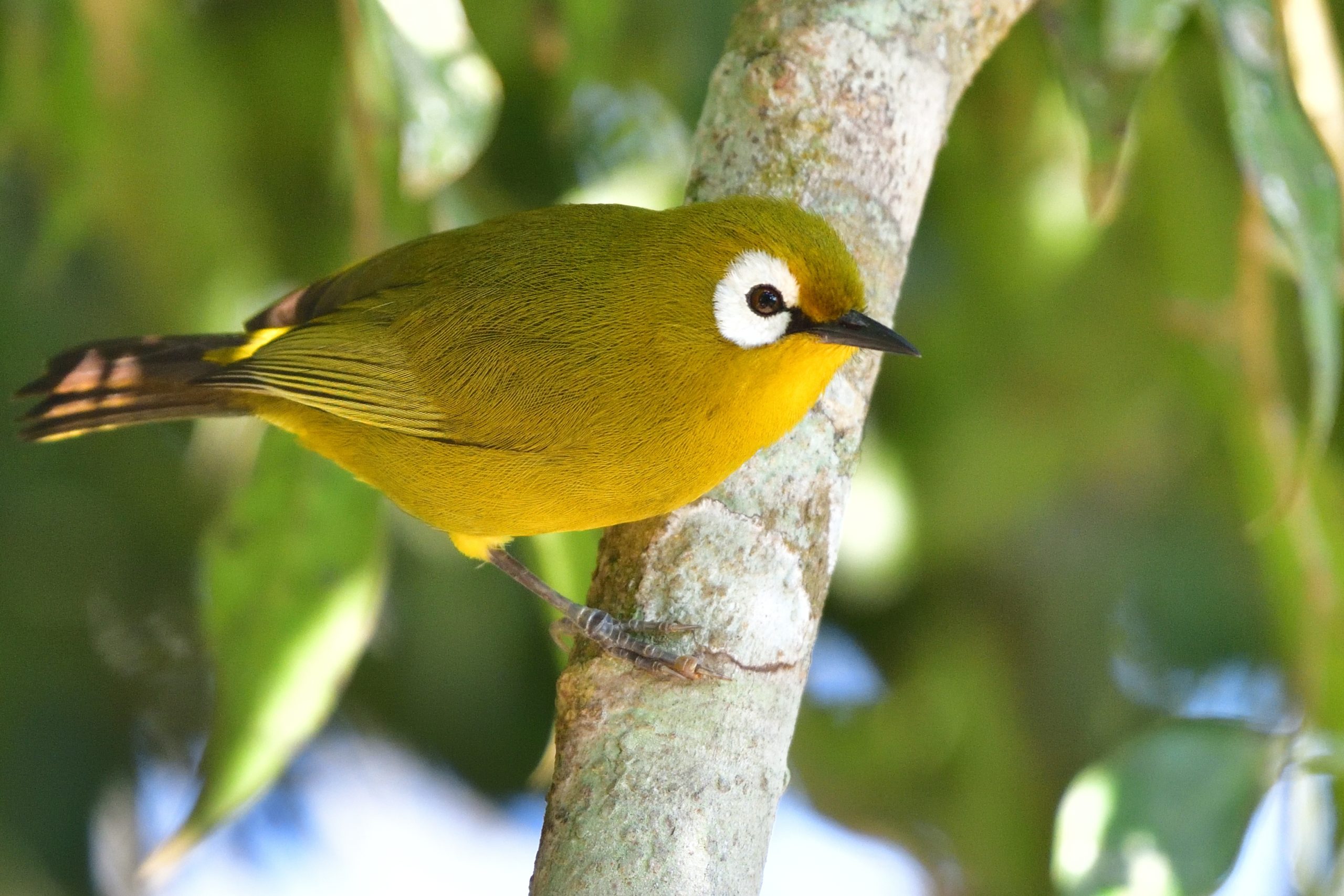
Broad-ringed White-eye, Zosterops eurycricotus, Endemic to Mt Meru and Mt Kilimanjaro, Tanzania
Day 12, Wednesday, October 6 – My house – Nanja
Rob was now left with only 2 target birds and Abdul and I had a very good idea where to find them. We drove to the little Masai Village of Nanja, took off the main road and headed for the lake nearby. Our first target was the Thika (Coqui) Francolin. We soon heard they call some distance away and drove closer and closer. My guests were eager and got out of the car. I tried to tell them to get back in, but to no avail. Rob got fleeting looks. When everyone was back in the car, we continued the chase and at one point we had them only a meter from the car providing excellent views for everyone. Now, with only one bird left, the Northern Pied Babbler, we drove to every small tree in the vicinity and after 10-15 minutes search we came upon a group of them. It was still early, but with all the birds in the box, we decided to head back home and relax by the pool.
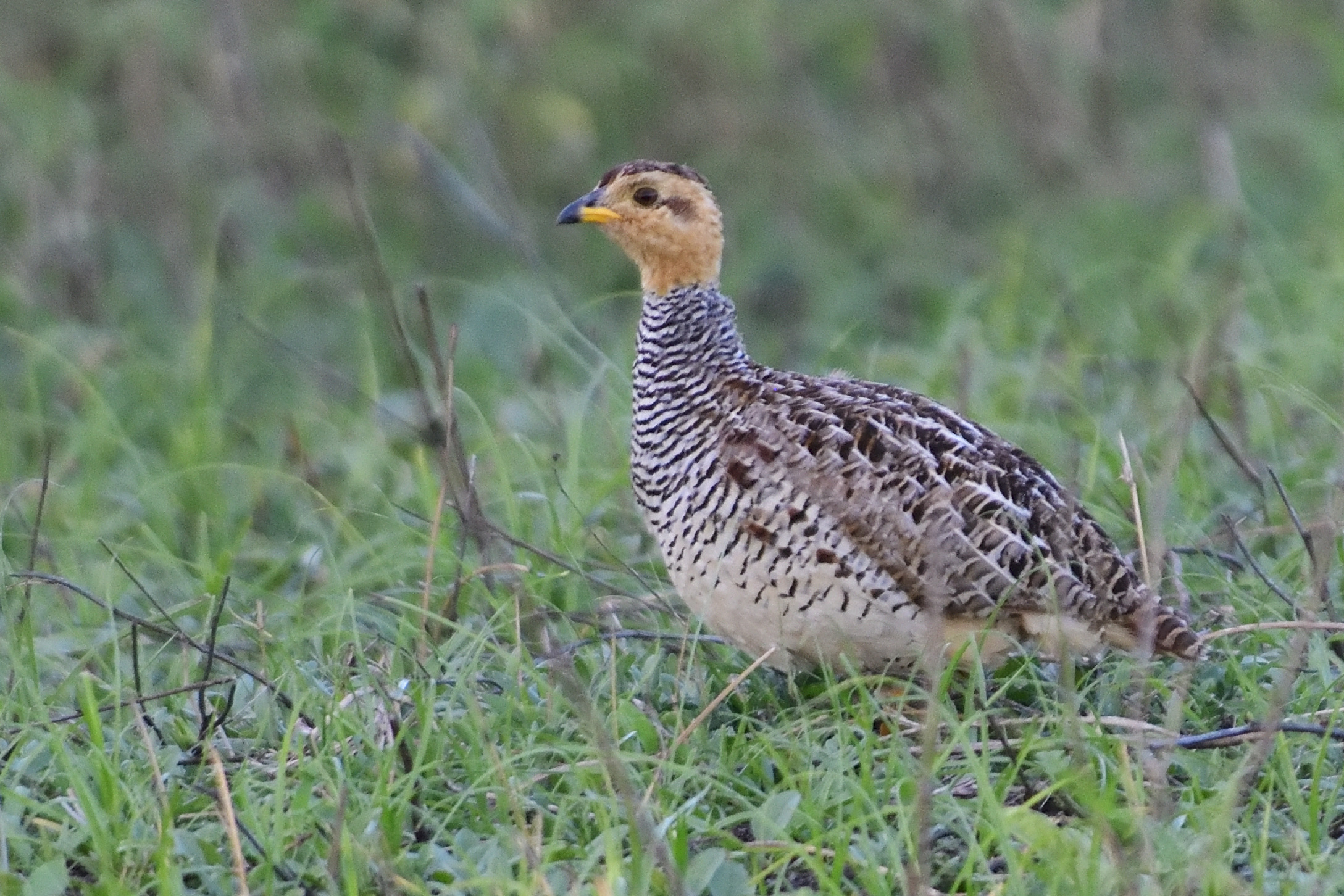
Thika (Coqui) Francolin, Campocolinus thikae, endemic to Tanzania ans Kenya. Picture from archive and in Rob´s book
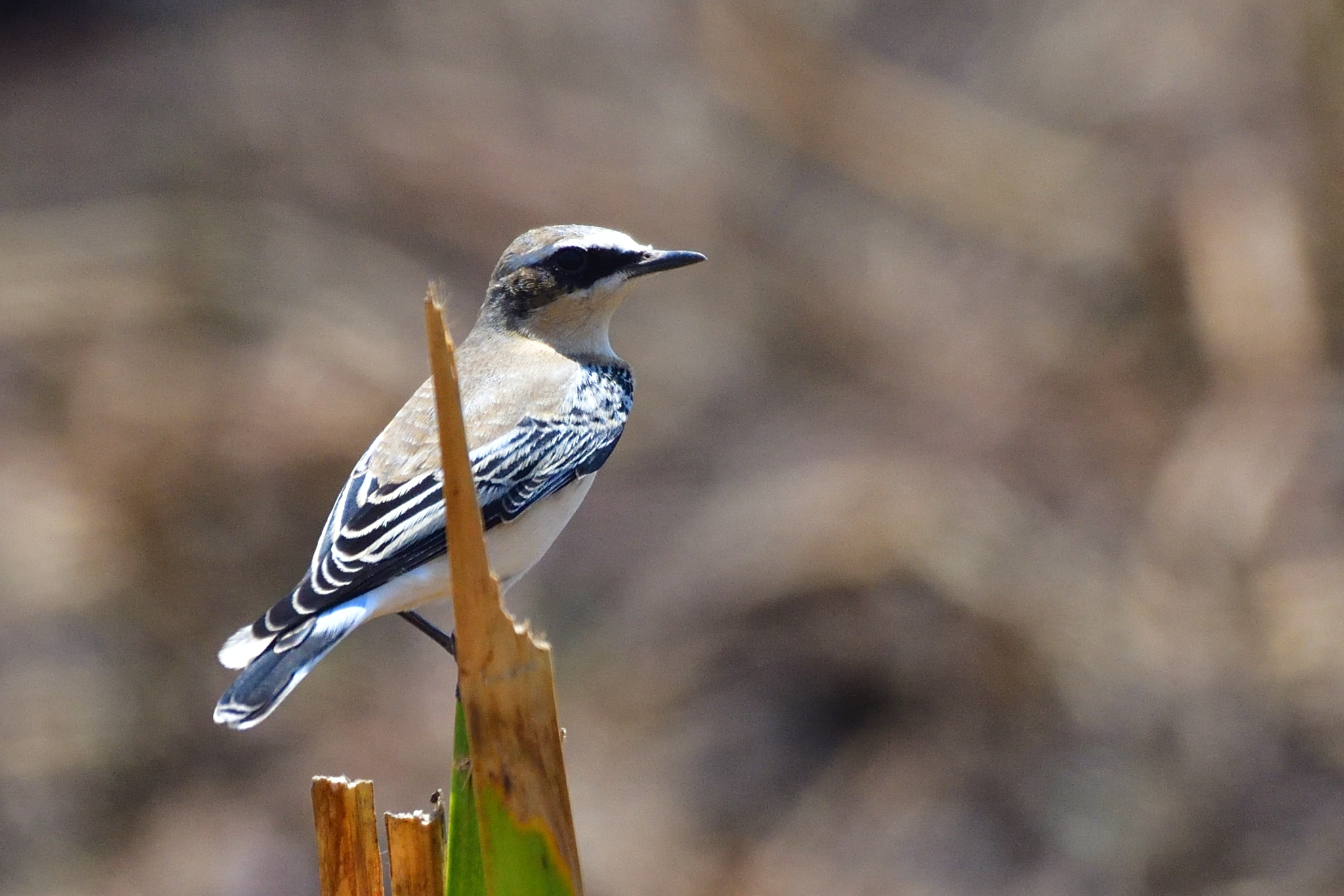
Isabelline Wheatear, Oenanthe isabellina
Day 13, Thursday, October 7 – Kalinga Forest – Mt. Meru Hospital – Home.
One bird the Forest (Short-tailed) Batis had eluded us on the entire trip. We decided to give it one more go at the nearby Kalinga Forest. However; no luck. We went to the Hospital instead for Karen and Rob to get their PCR test done. In the afternoon we went through the lists and found out that Rob had gotten 78 lifers on the trip. He was quite happy about that.

Getting a dedicated copy of Rob´s book in my garden
Day 14, Friday, October 8 – My house – Kilimanjaro International airport.
Rob and Karen decided to have a relaxed day by my house and at 15:00 I drove them to the airport. Only problem was that they had not gotten their Covid certificates yet. I hung around the airport and waited and by 17:00, the test came through and I could print them and deliver them to Rob. End of trip